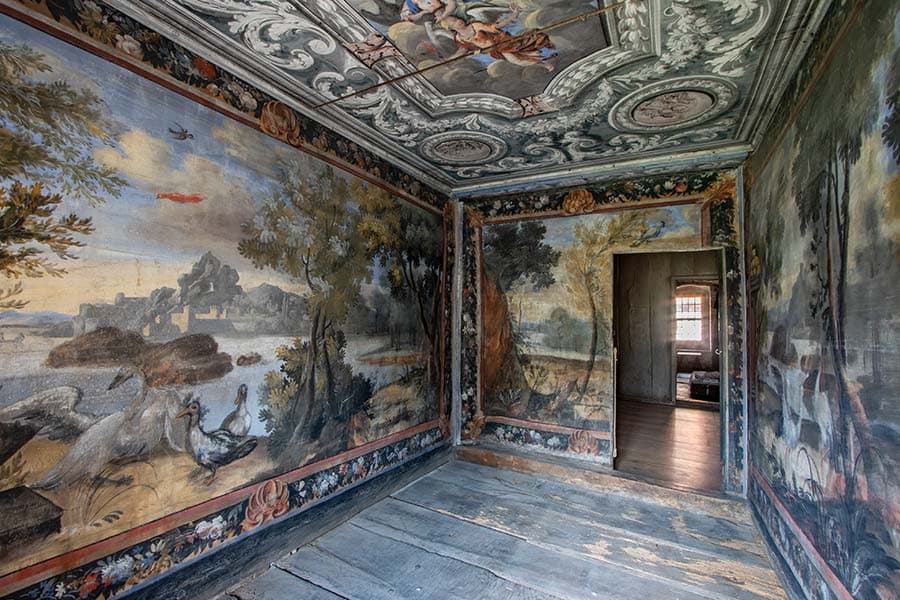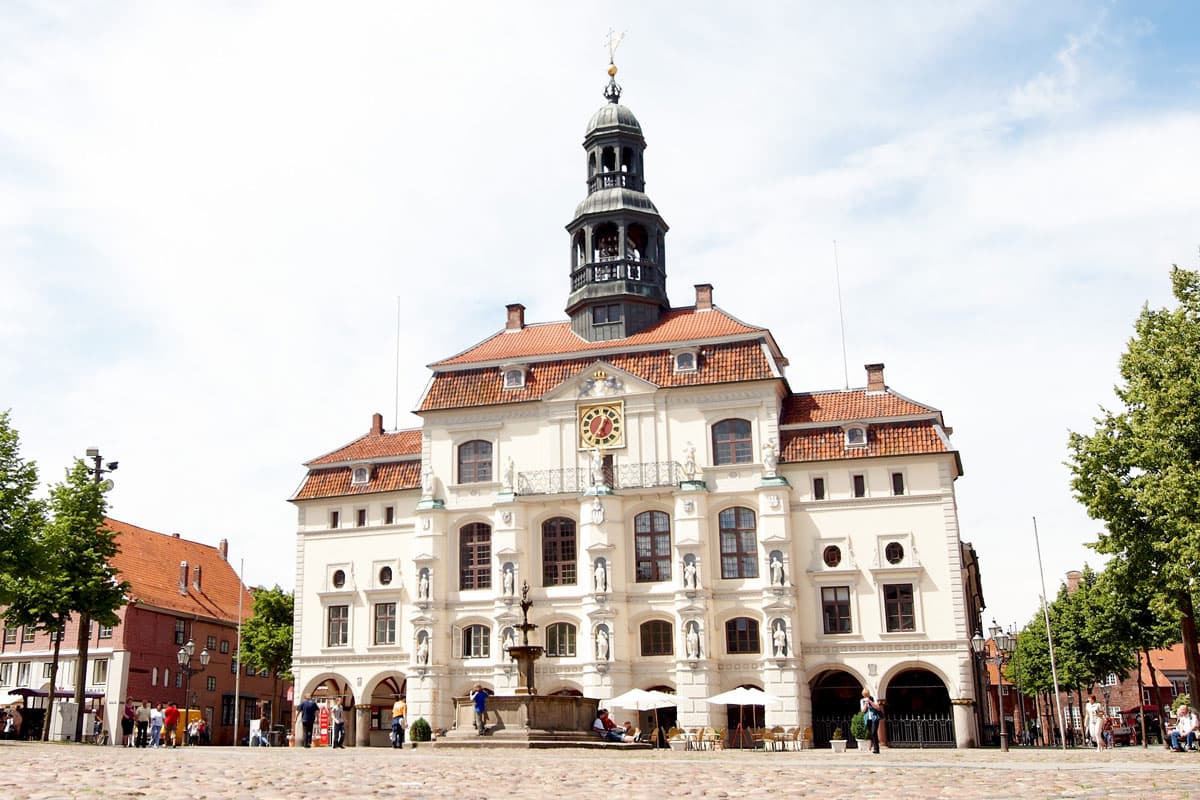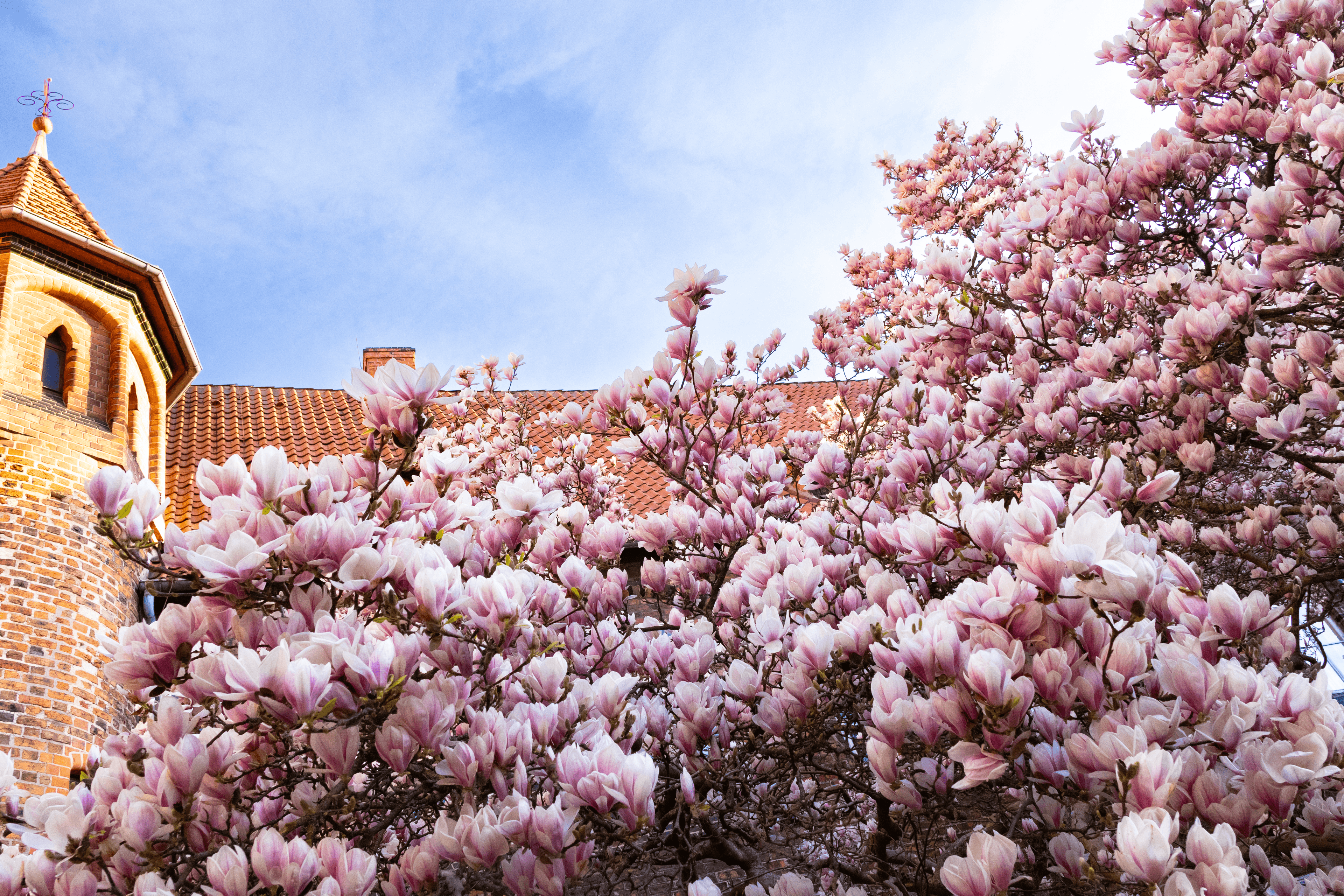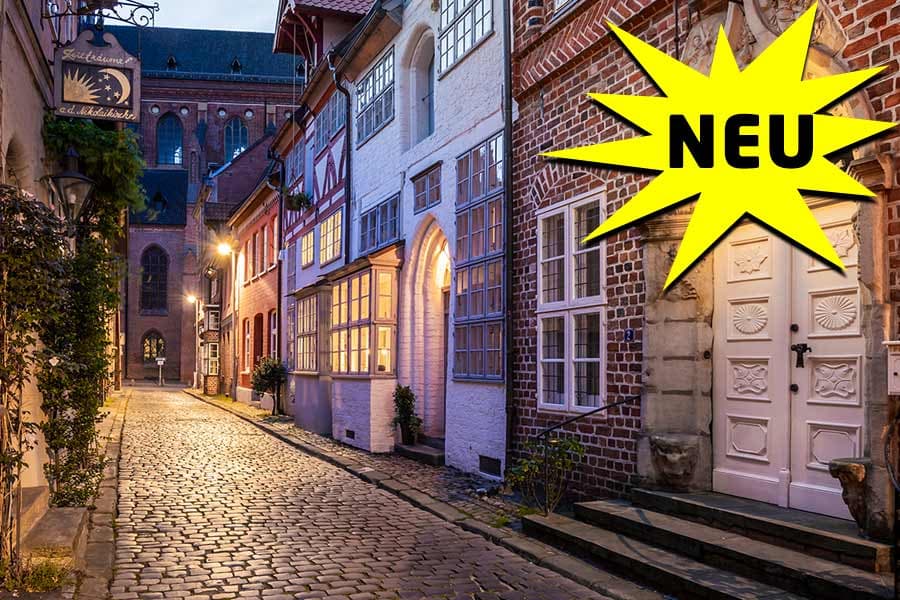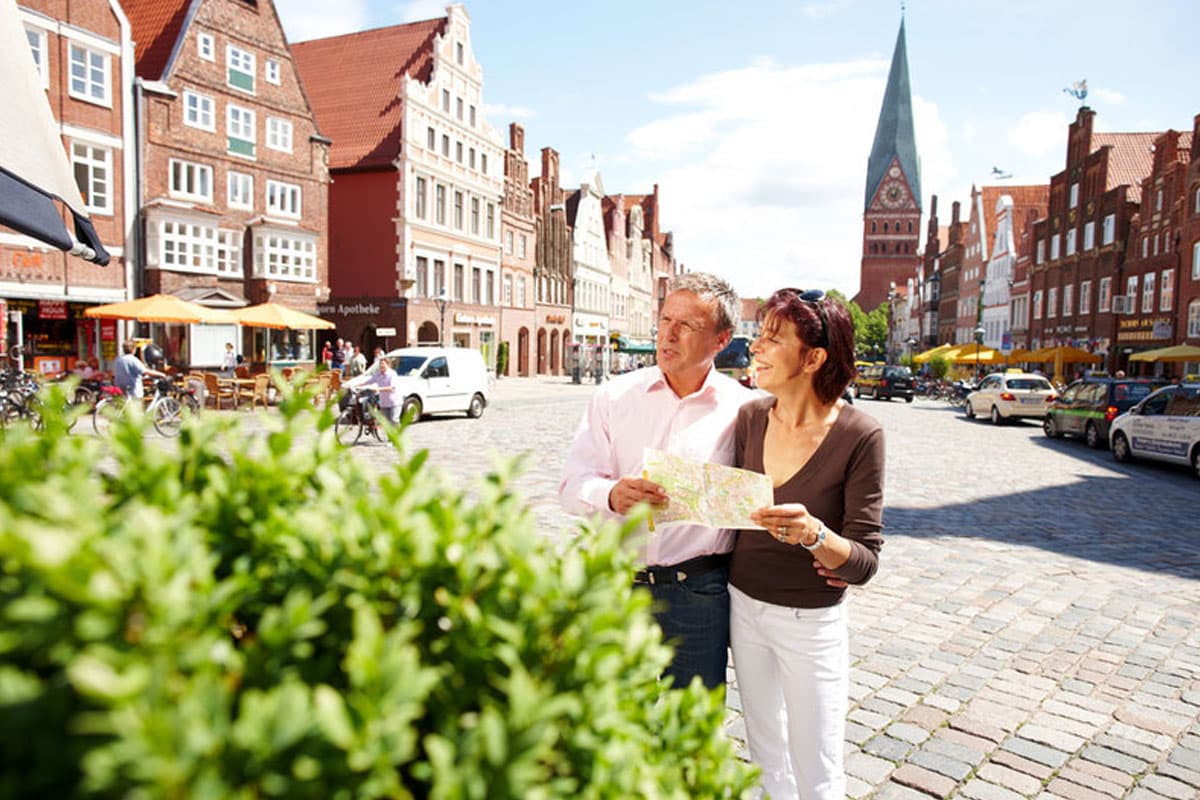
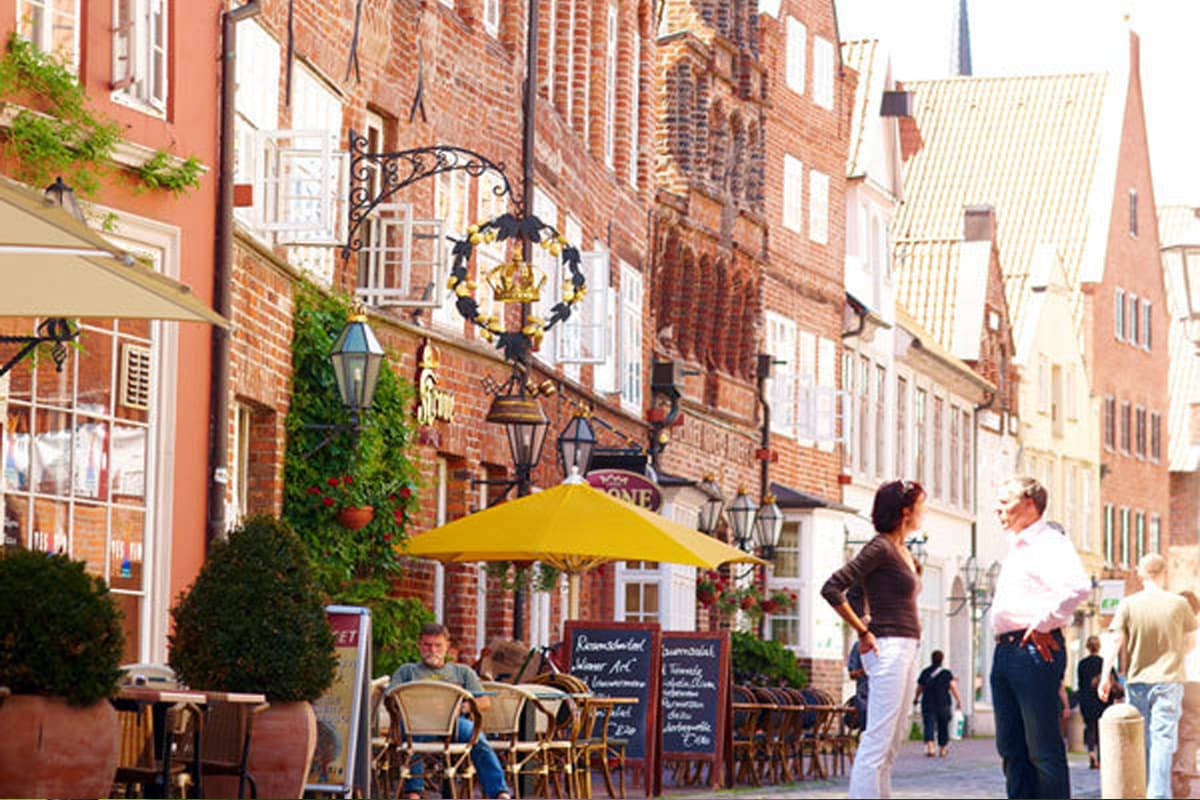
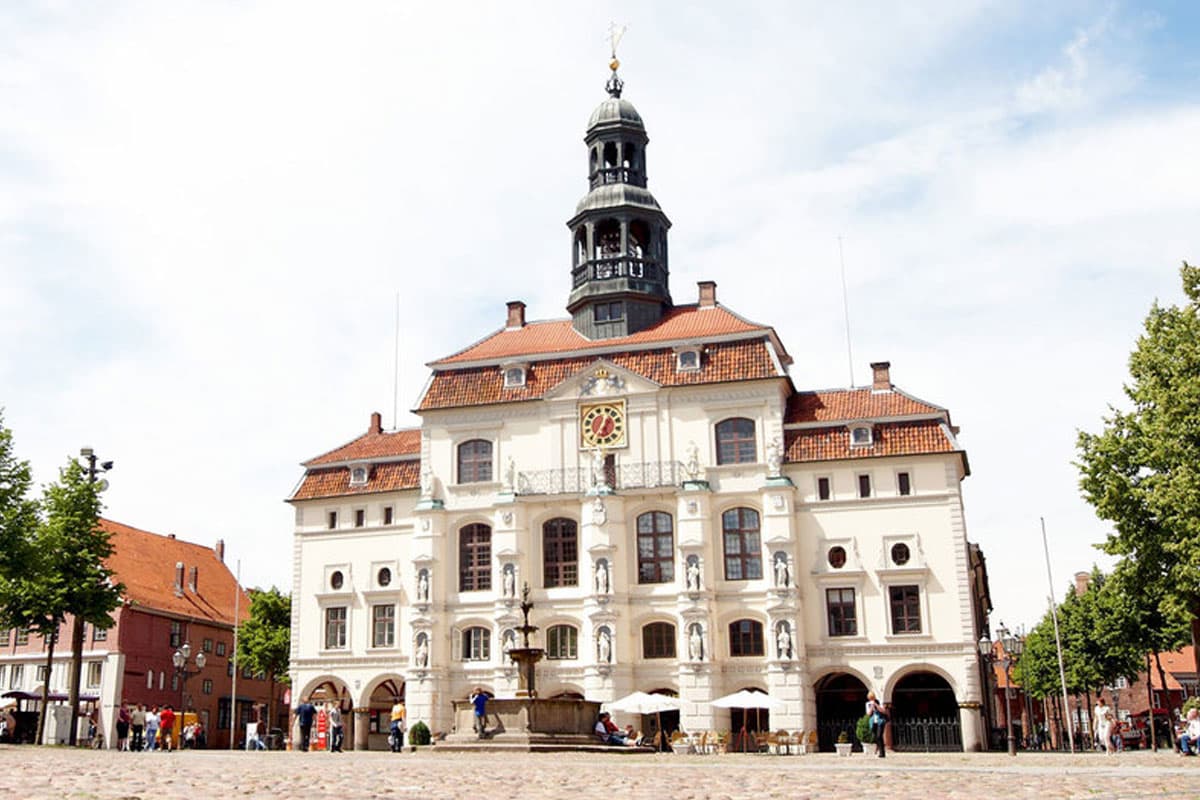
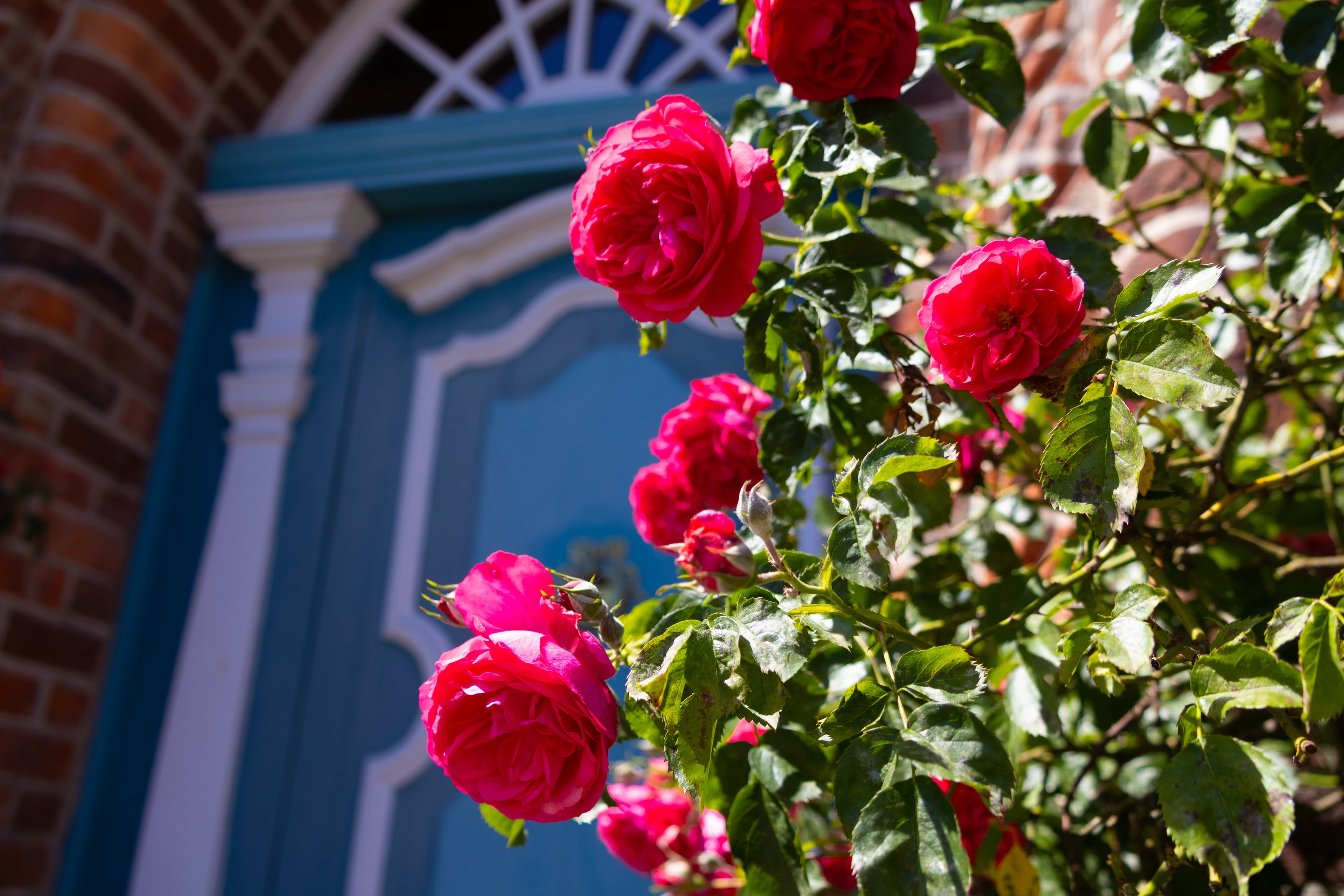
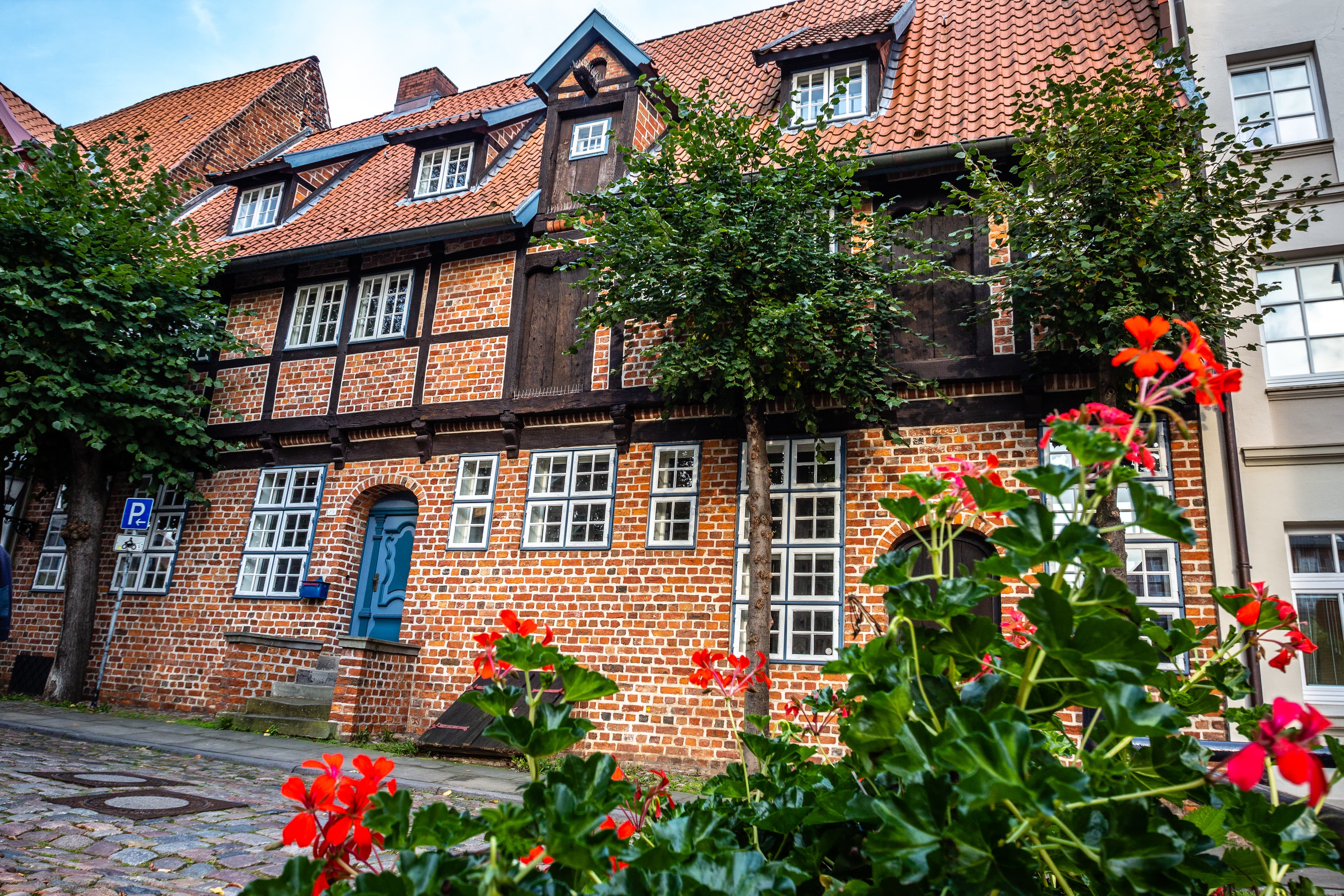
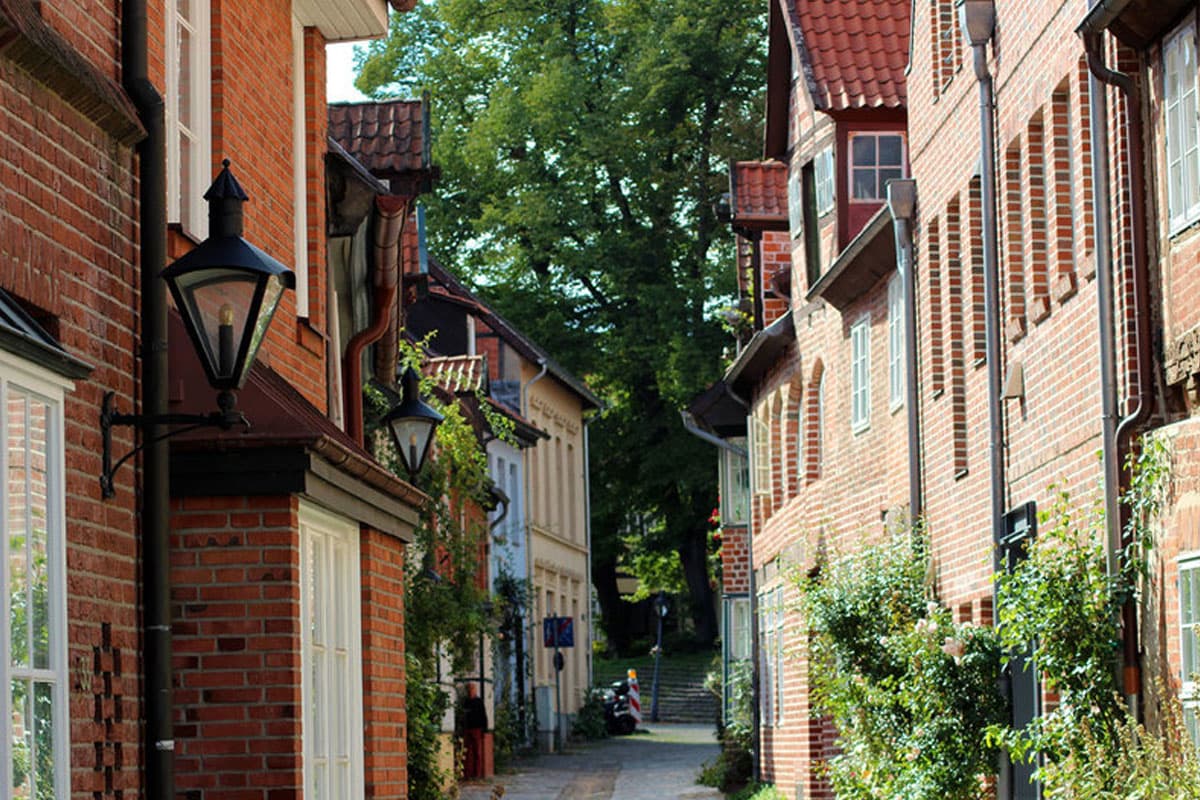
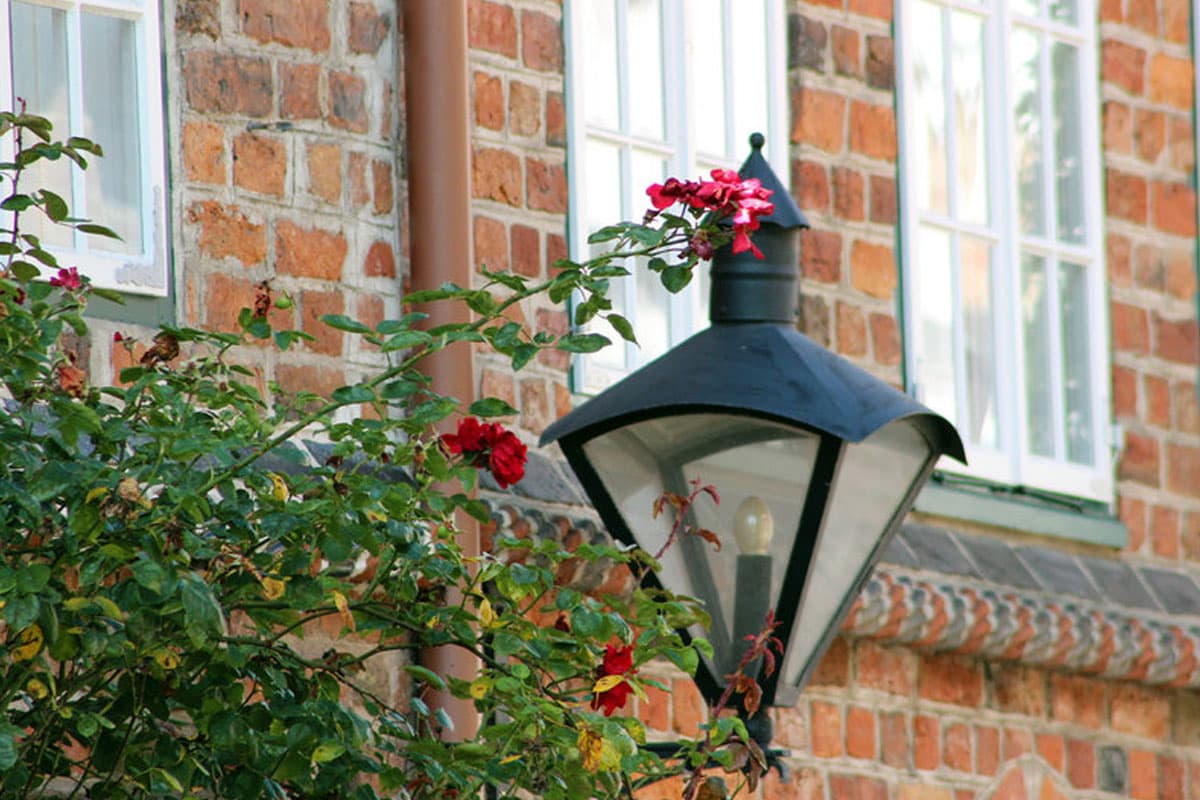
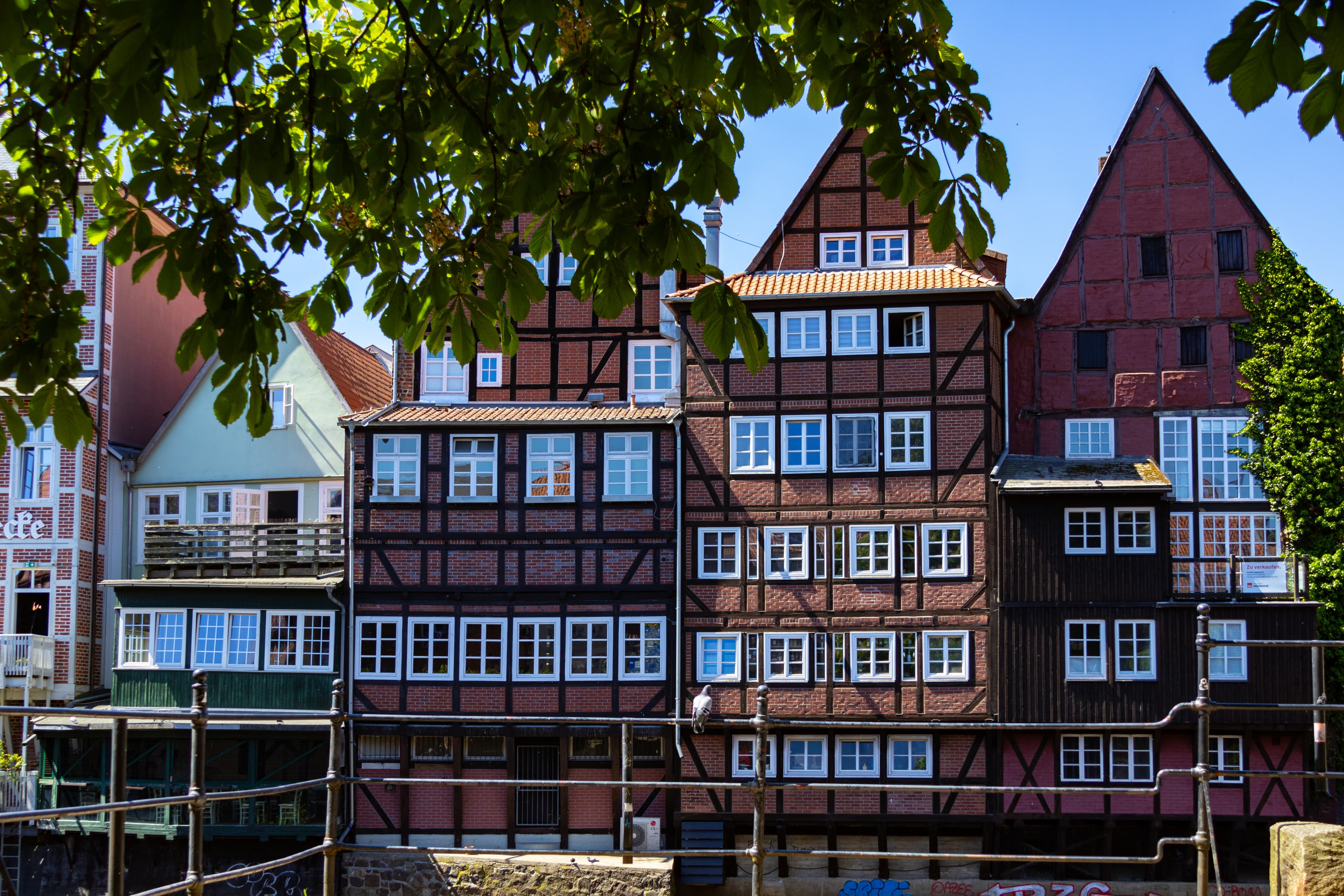
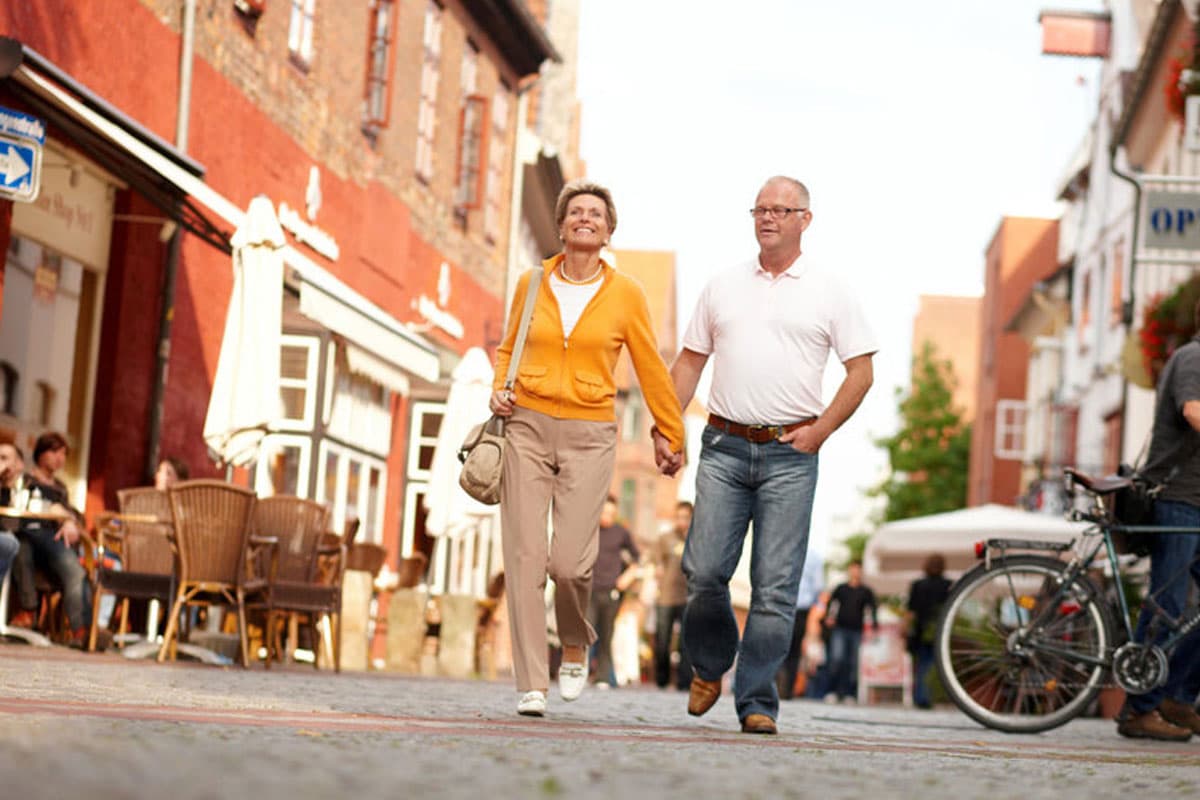
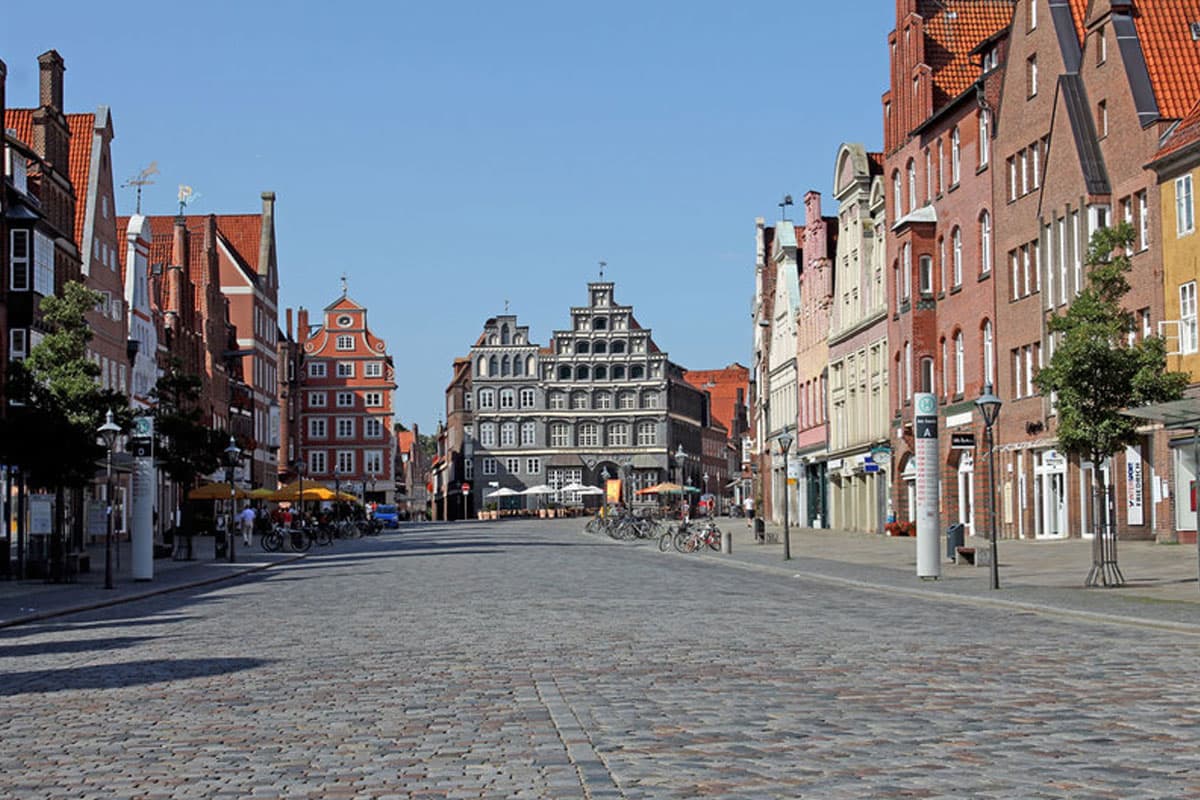
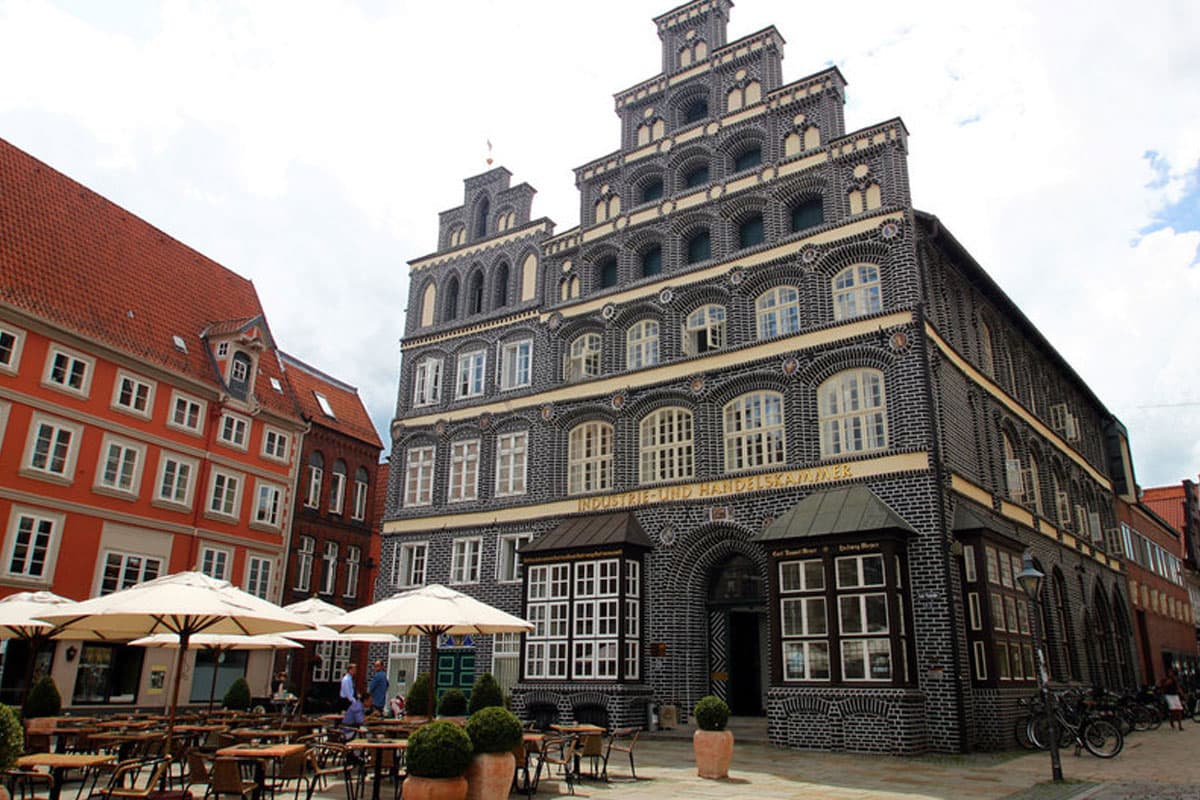
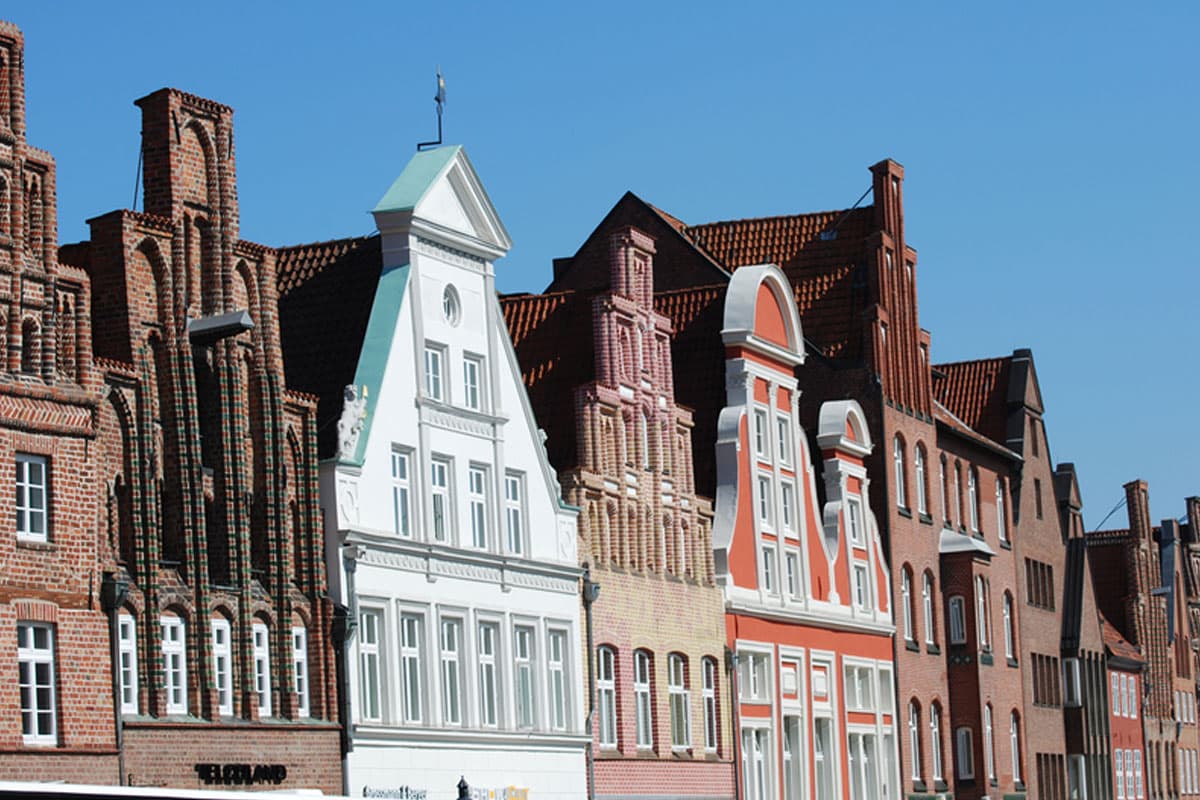
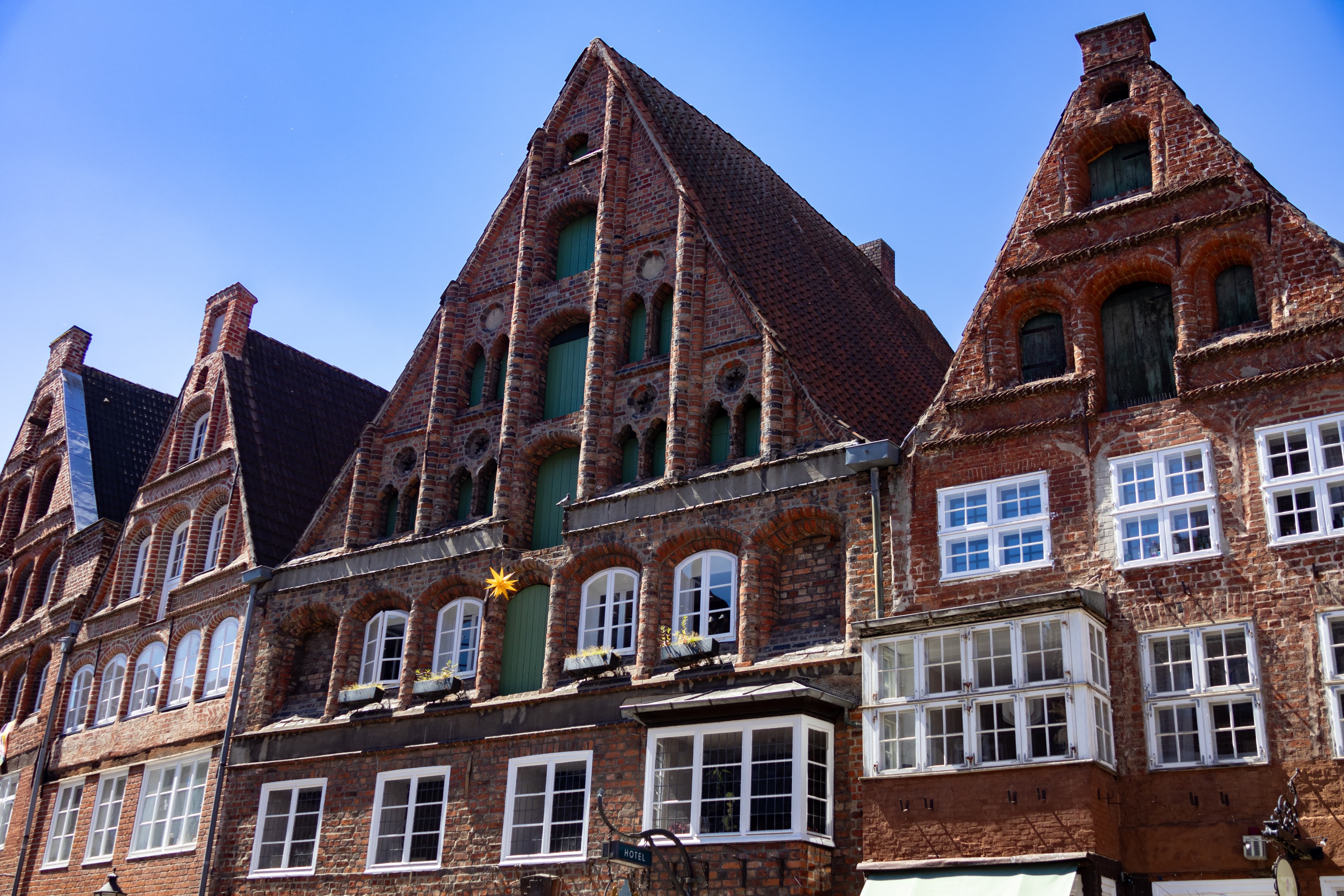
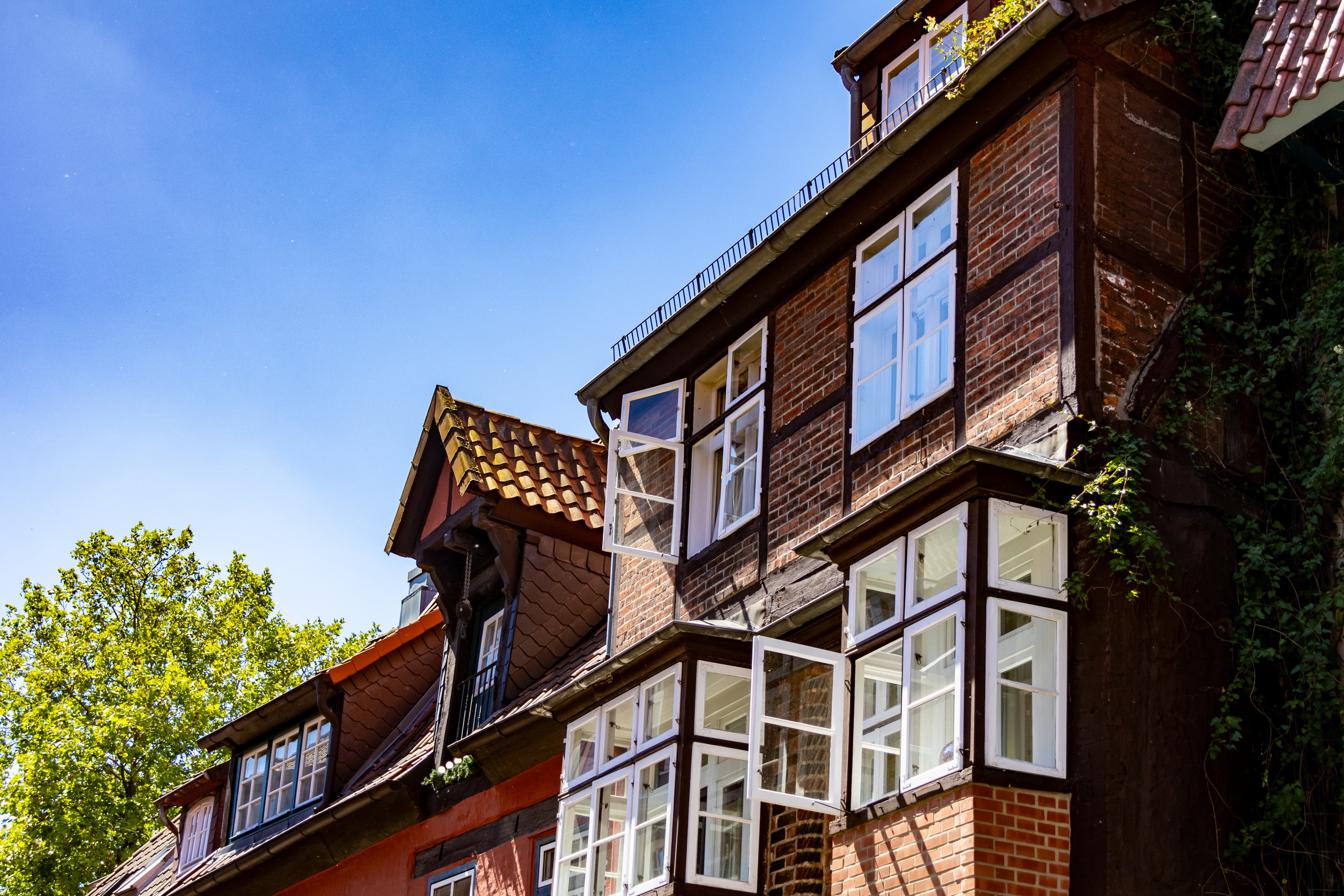
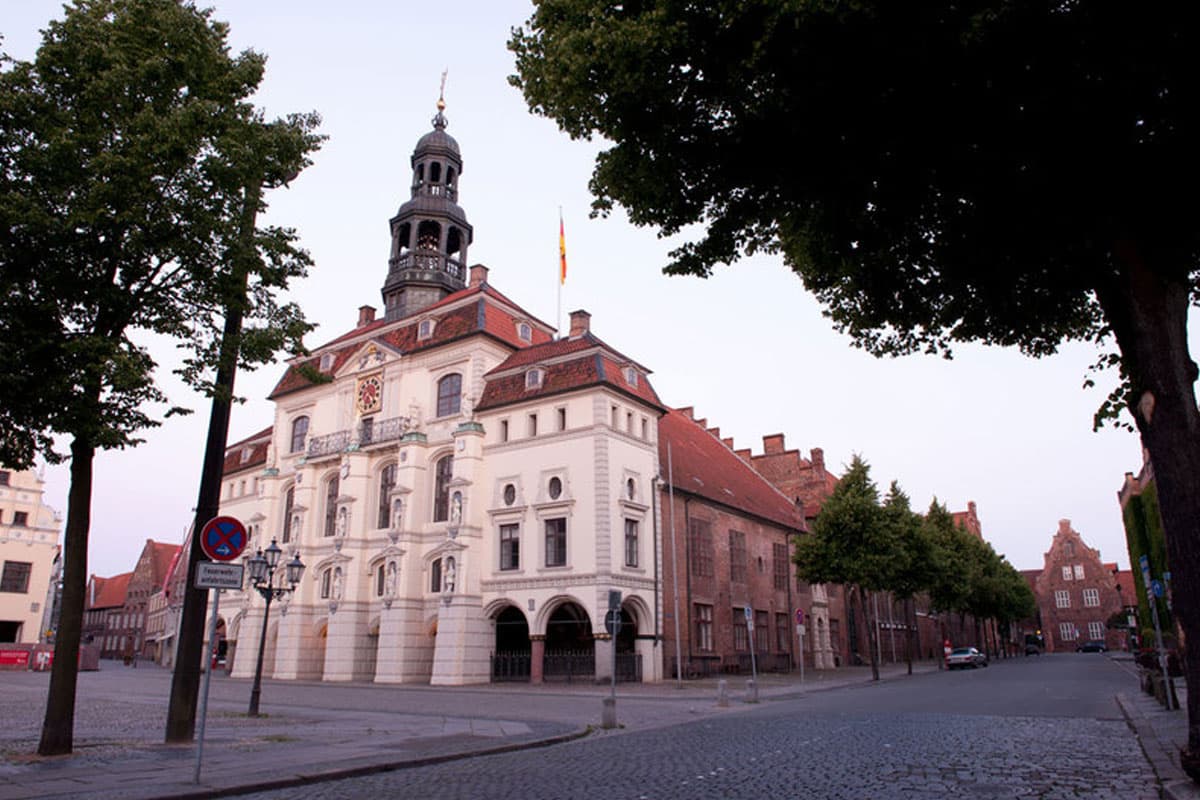
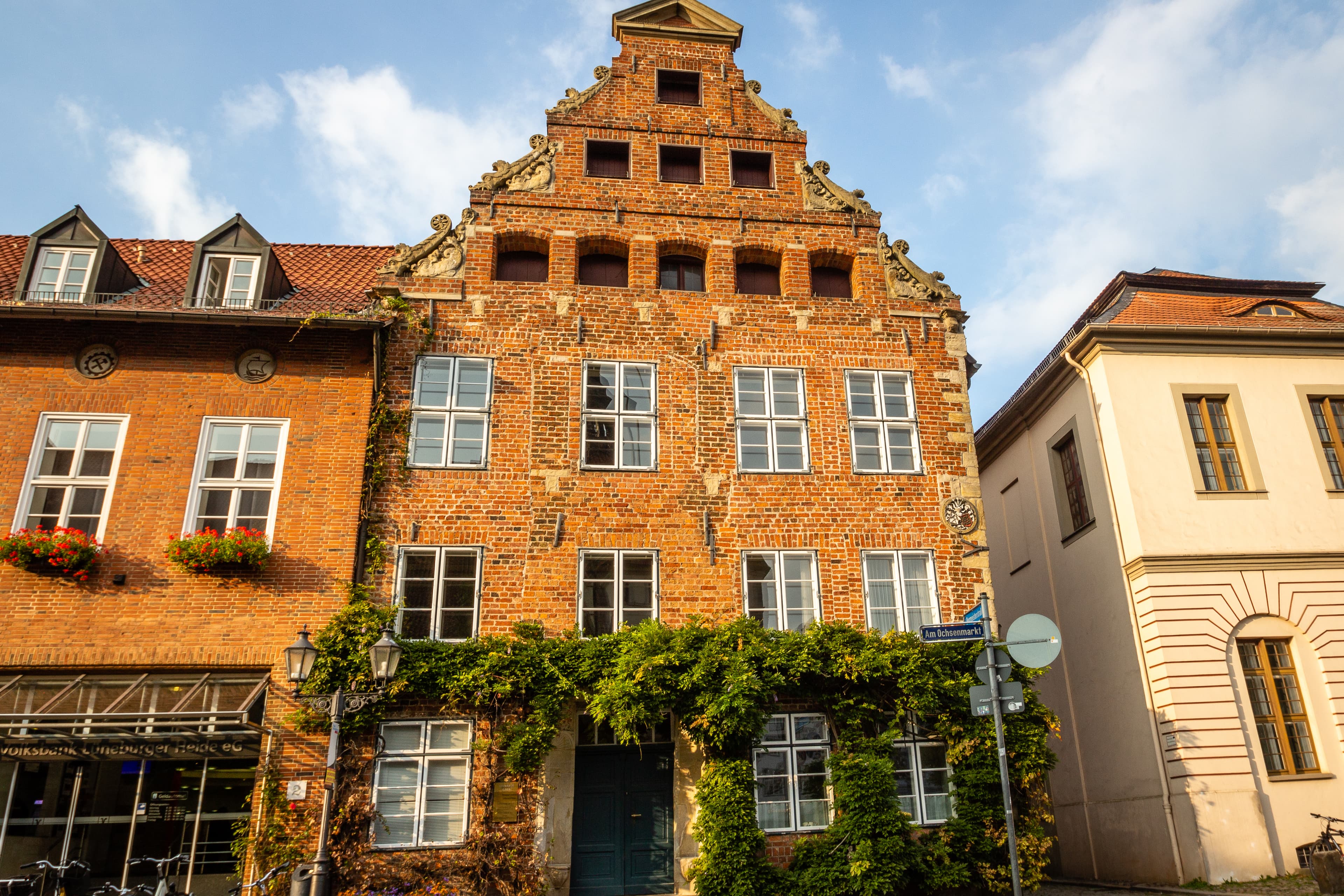
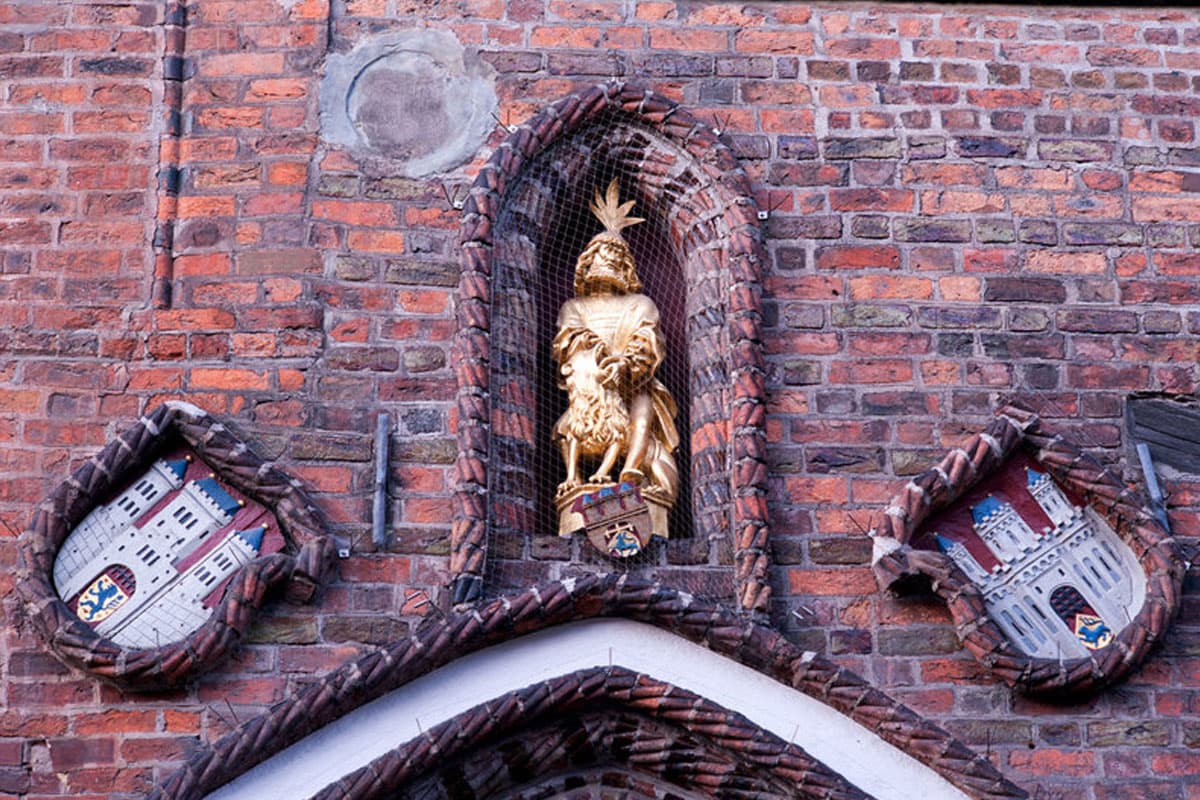
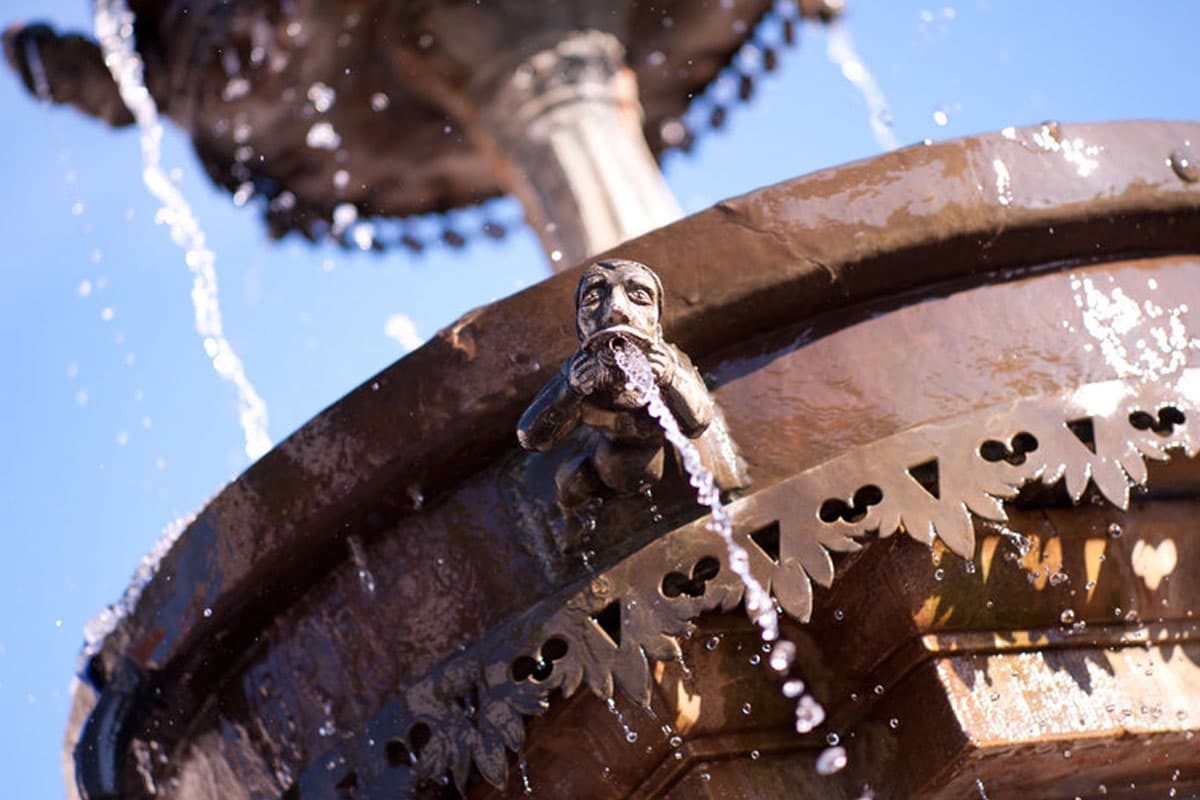
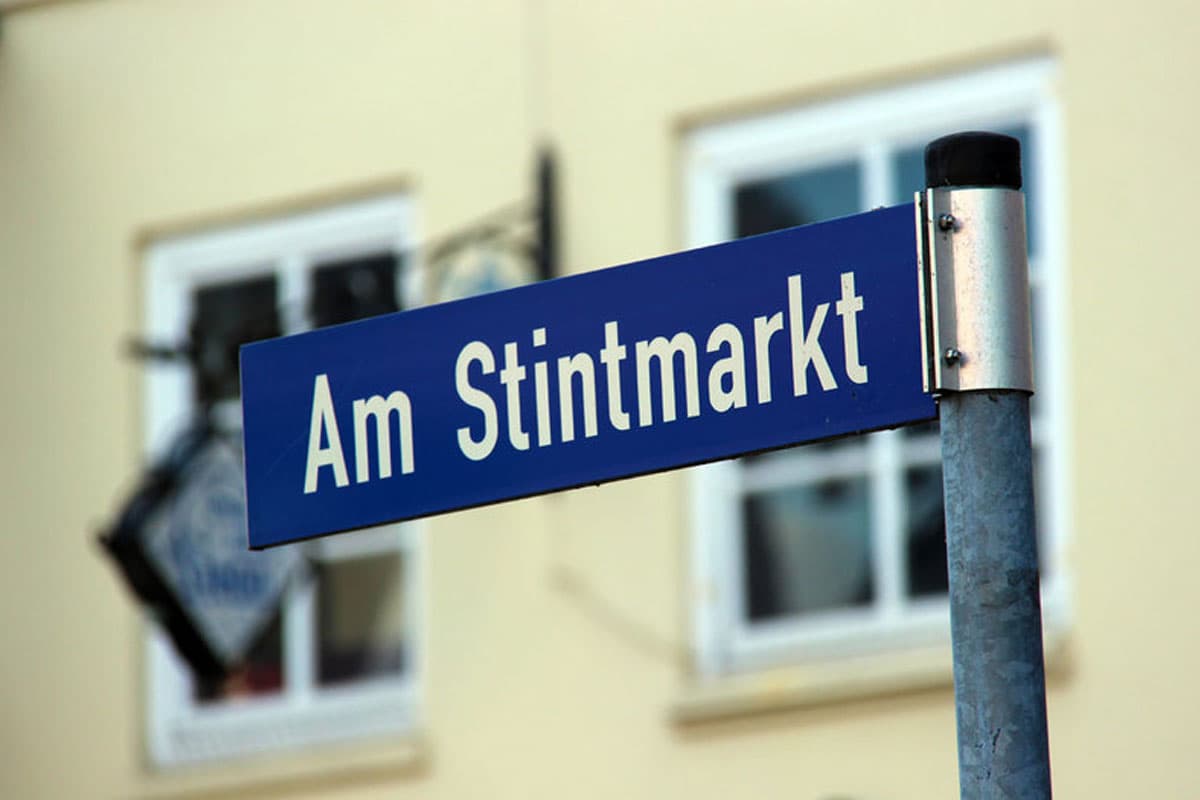
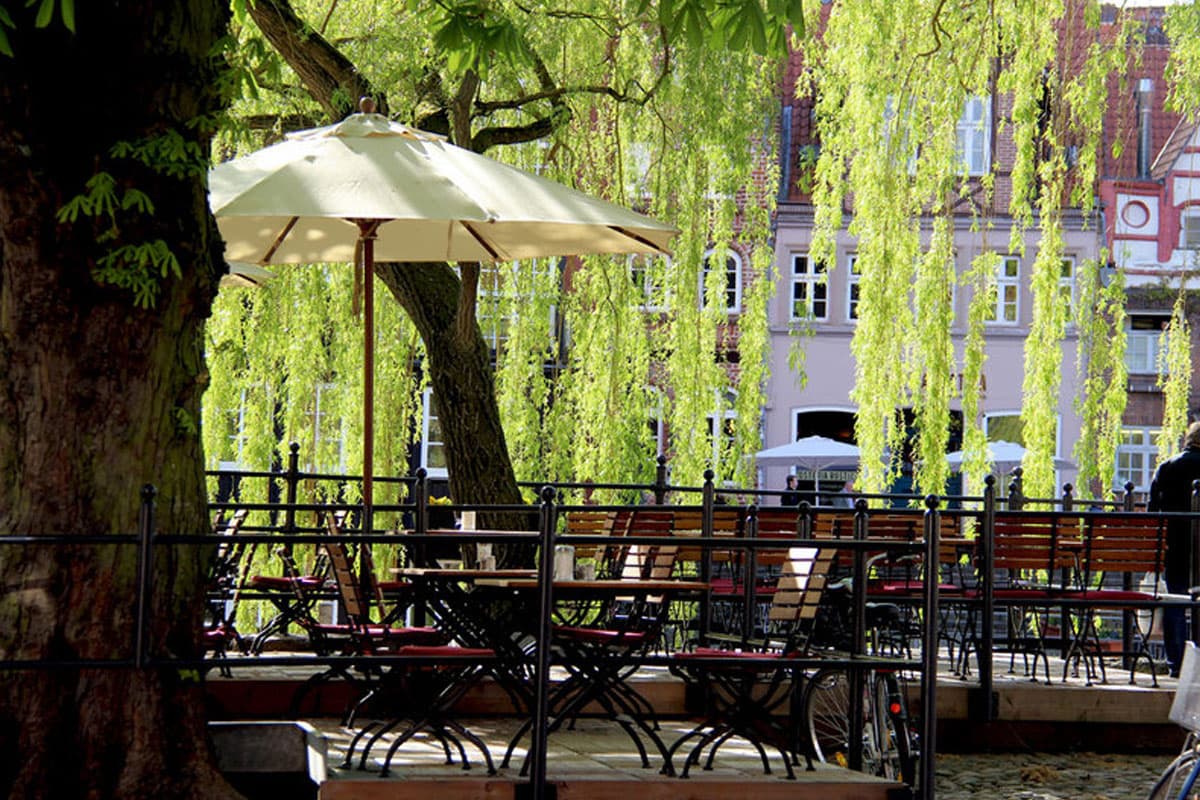
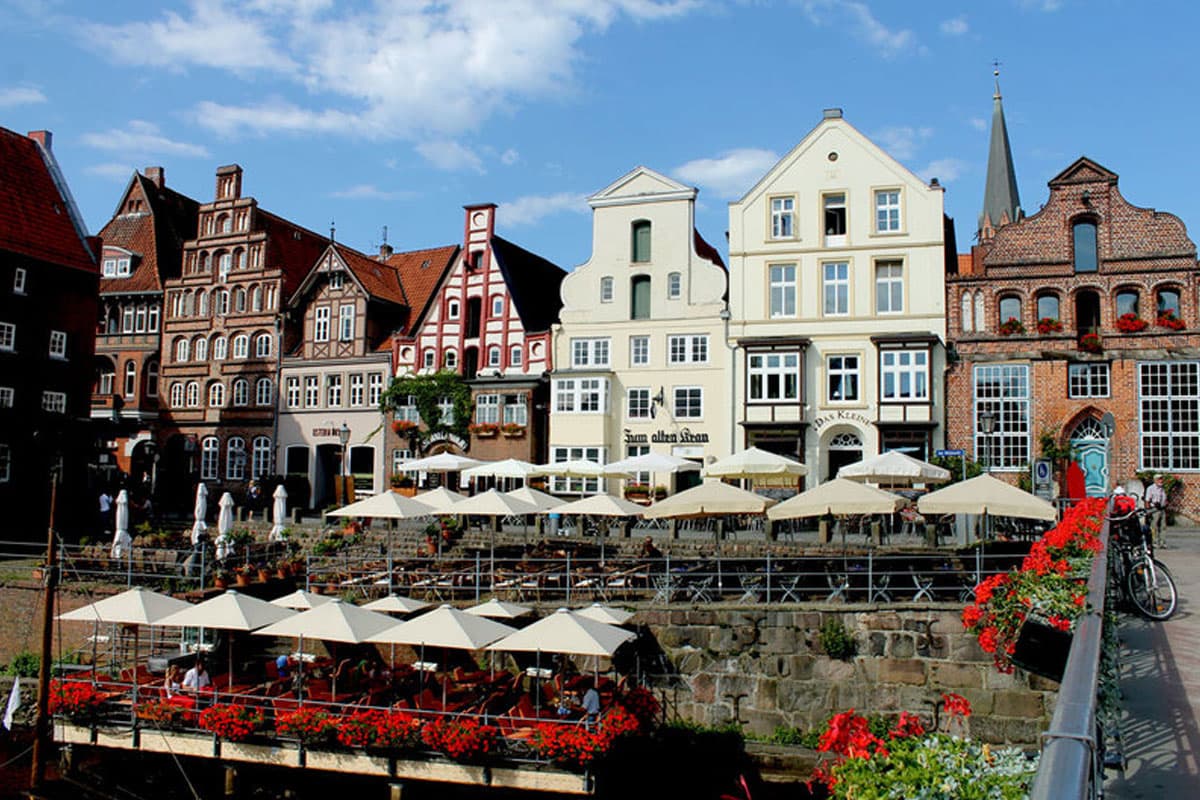
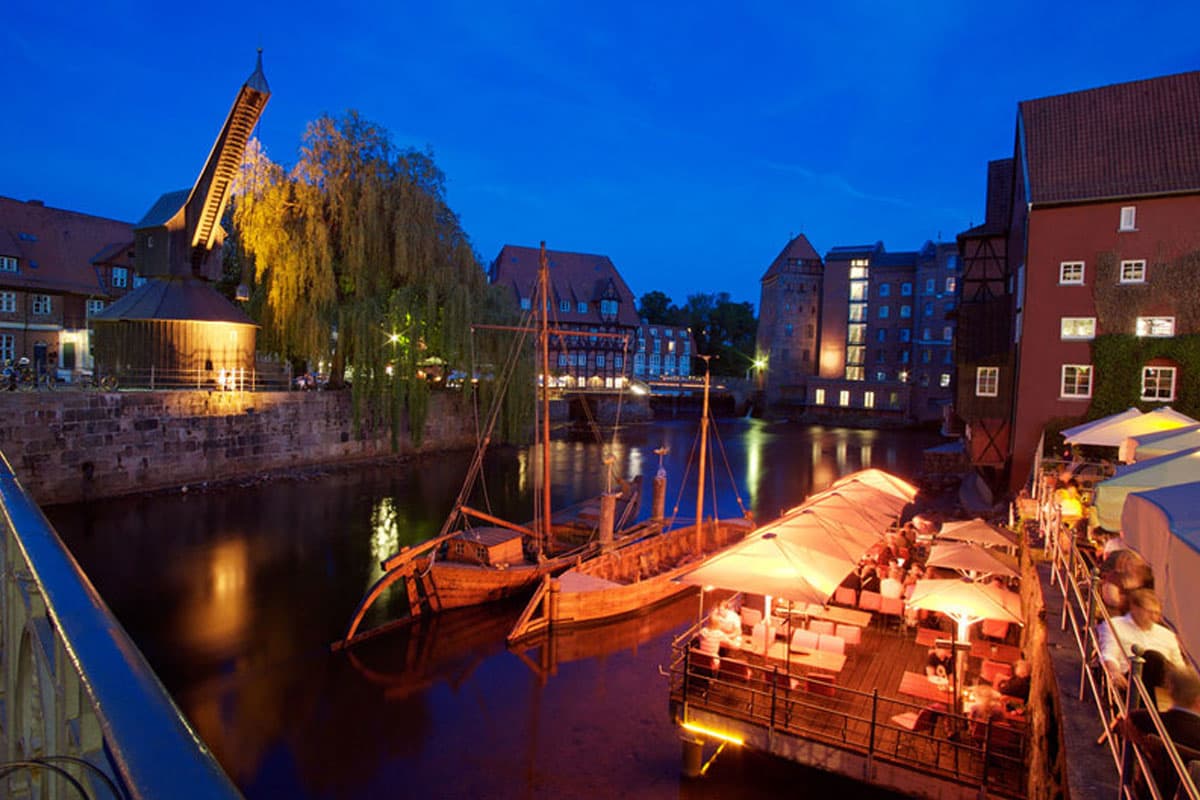
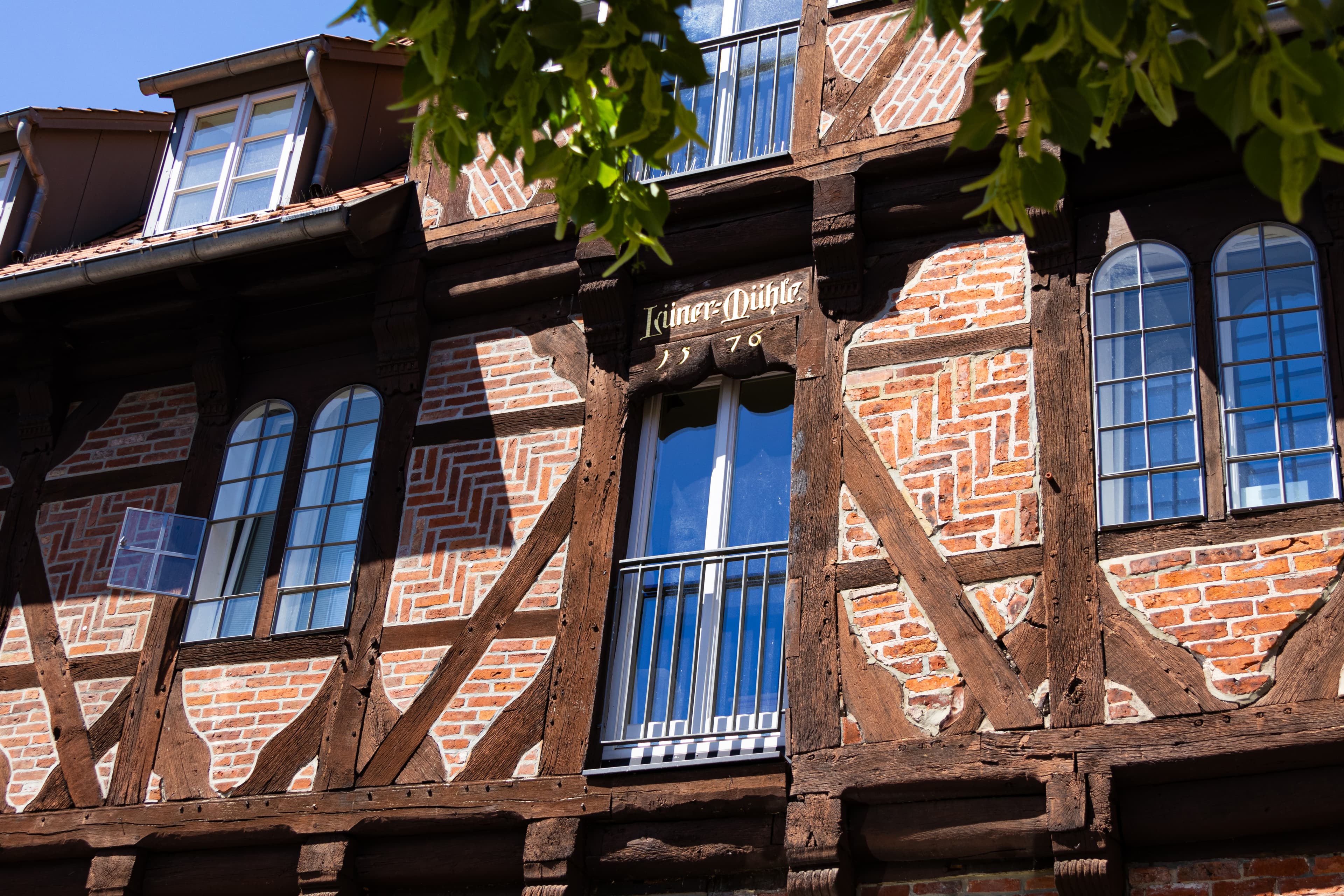
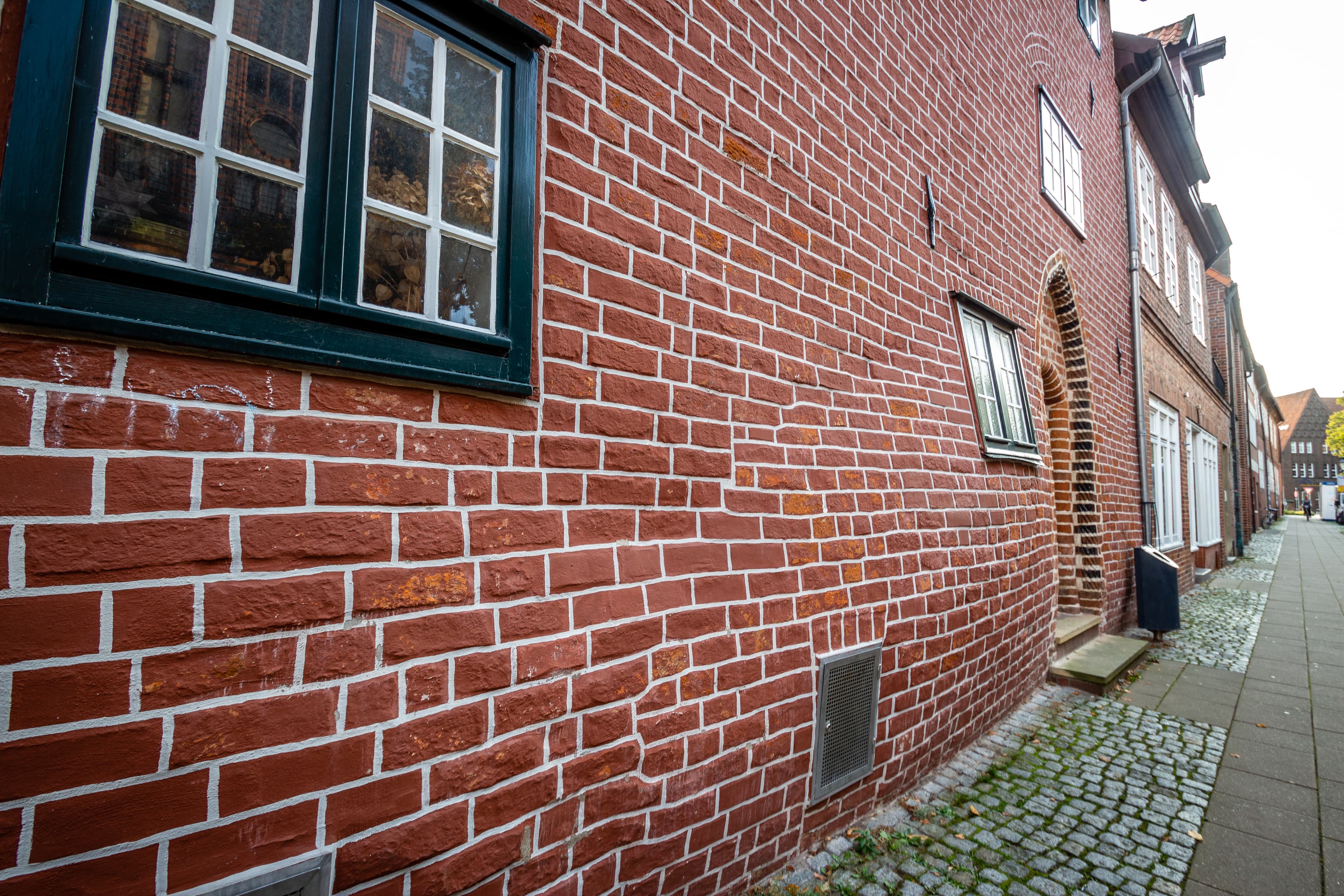
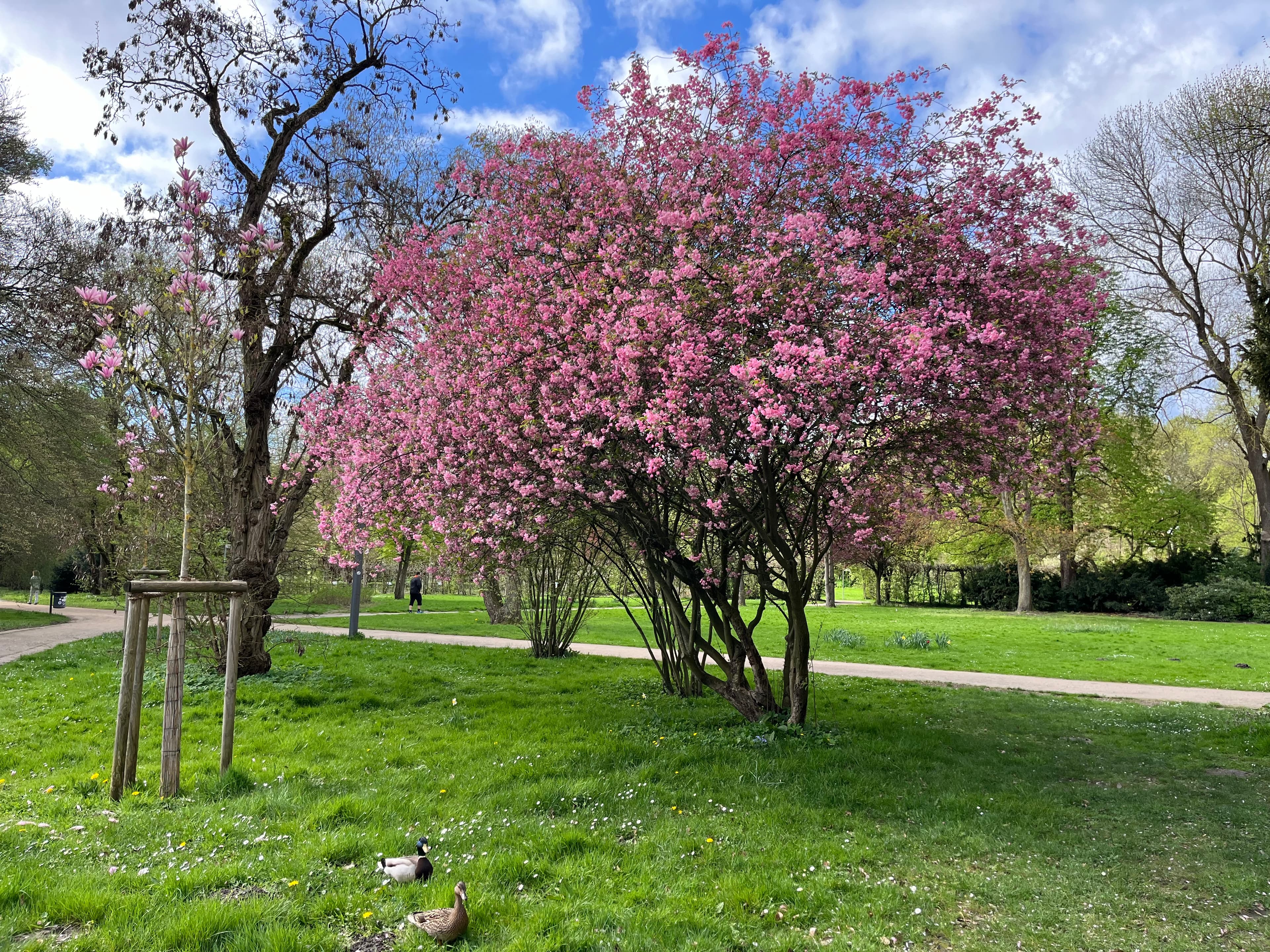
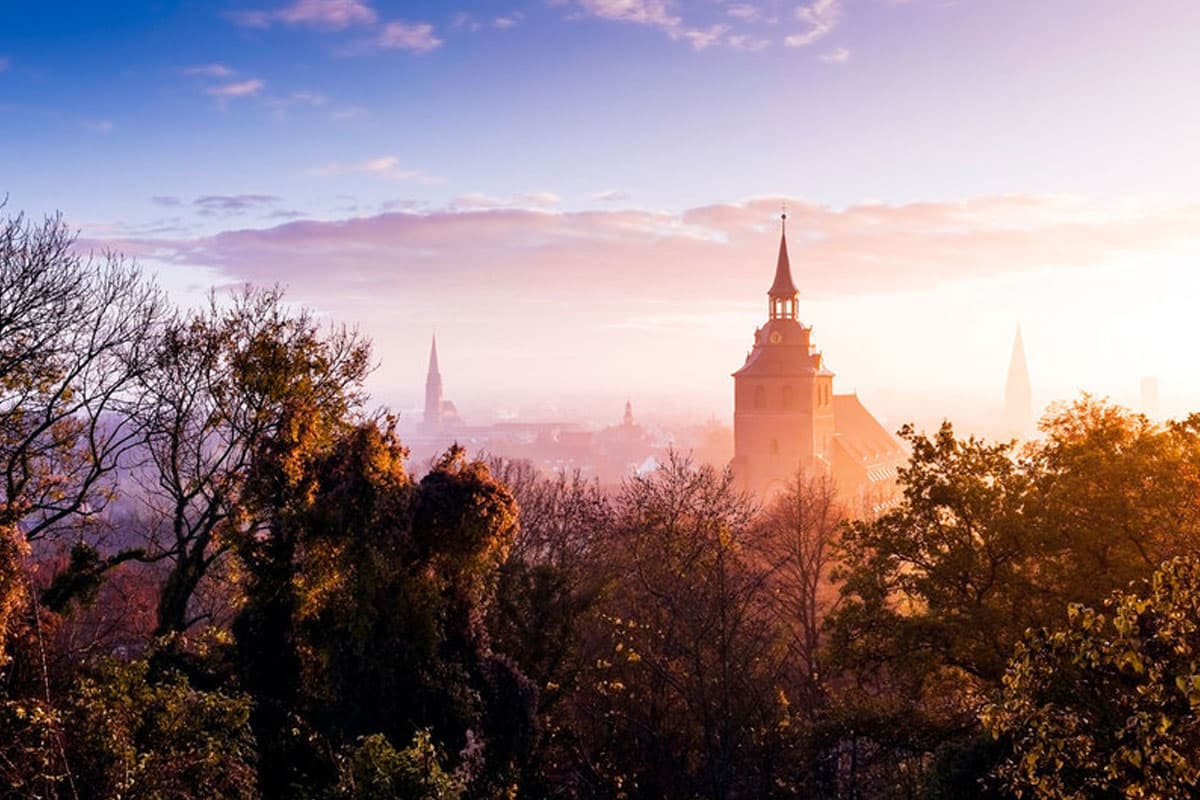
Die bewegte Geschichte Lüneburgs
Die Geschichte Lüneburgs reicht über 1000 Jahre zurück. Gegründet auf einem Salzstock, entwickelte sich die Stadt im Mittelalter zu einer der bedeutendsten Hansestädte. Das Salz, auch als "Weißes Gold" bekannt, war der Motor des wirtschaftlichen Aufschwungs während der Hanse und machte Lüneburg weit über die Region hinaus bekannt. Die strategische Lage an der Ilmenau, die den Zugang zur Elbe ermöglichte, unterstrich die Bedeutung der Stadt als Handelszentrum.
Ein besonderes Merkmal der Hansestadt war ihr Rat, der aus wohlhabenden Bürgern bestand und über weitreichende Befugnisse verfügte. Die sogenannten Sülfmeister, Leiter der Salzproduktion, hatten eine besondere Stellung und waren zentrale Figuren des wirtschaftlichen Lebens. Ihr Wissen und Einfluss trugen entscheidend zur Prosperität der Stadt bei. Noch heute erinnern die Sülfmeistertage, ein jährliches Fest, an ihre historische Bedeutung.
Ein weiterer faszinierender Aspekt Lüneburgs ist, dass die Stadt während des Zweiten Weltkriegs nicht zerstört wurde. Dies ist eine Seltenheit unter deutschen Städten und erklärt, warum die historische Altstadt mit ihren prächtigen Giebelhäusern und mittelalterlichen Straßenzügen heute nahezu unverändert erhalten ist.
Urlauber können diese reiche Vergangenheit in der Stadt erleben. Prächtige Giebelhäuser, das historische Rathaus und das Deutsche Salzmuseum bieten Einblicke in Lüneburgs Blütezeit.
Die historische Altstadt – Ein Spaziergang durch die Geschichte
Lüneburgs historische Altstadt ist ein wahres Juwel. Mit ihren gepflasterten Gassen, den prächtigen Giebelhäusern und der beeindruckenden Backsteinarchitektur versetzt sie ihre Besucher in vergangene Zeiten. Besonders hervorzuheben sind:
- Das Rathaus: Ein Meisterwerk norddeutscher Baukunst mit seiner Renaissancefassade und dem imposanten Glockenspiel.
- Der Marktplatz: Mittelpunkt der Stadt, wo mittwochs und samstags der Wochenmarkt stattfindet.
- Die St. Johanniskirche: Mit ihrem markanten schiefen Turm ein Wahrzeichen der Stadt.
- Der Alte Kran: Ein beeindruckendes Relikt der Hansezeit, das an die Bedeutung Lüneburgs als Handelsstadt erinnert.
- Das Heinrich-Heine-Haus: Ein historisches Gebäude, das an den bekannten Dichter erinnert und heute kulturelle Veranstaltungen beherbergt.
- Das Wasserviertel mit dem Stintmarkt: Ein malerischer Bereich am Ufer der Ilmenau, der einst den historischen Hafen beherbergte. Heute ist der Stintmarkt ein beliebter Treffpunkt mit zahlreichen Bars, Restaurants und einer lebendigen Atmosphäre.
Lüneburgs Altstadt ist nicht nur ein architektonisches Highlight, sondern auch ein Ort voller Leben. Kleine Cafés, Boutiquen und inhabergeführte Geschäfte laden zum Verweilen ein.
Die Salzgeschichte – Das „Weiße Gold“ von Lüneburg
Die Geschichte Lüneburgs ist untrennbar mit dem Salz verbunden. Seit dem Mittelalter wurde hier Salz abgebaut und gehandelt, was der Stadt ihren Reichtum und ihre Bedeutung als Hansestadt brachte. Das Salz, auch als „Weißes Gold“ bezeichnet, war ein lebensnotwendiges Gut, da es für die Konservierung von Lebensmitteln, insbesondere Fisch, unersetzlich war. Der gesalzene Fisch, vor allem Hering, war ein Grundnahrungsmittel in ganz Europa und sorgte dafür, dass Lüneburg zu einem der wichtigsten Handelszentren der Hanse wurde.
Die Salzgewinnung erfolgte durch das Sieden salzhaltigen Wassers, das aus einem unterirdischen Salzstock gewonnen wurde. In den Sülzen, großen Sudpfannen, wurde das Wasser erhitzt, bis das Salz kristallisierte. Dieser aufwendige Prozess verlangte viel Brennmaterial, das in den umliegenden Wäldern geschlagen wurde. Der Salzabbau prägte nicht nur die Wirtschaft, sondern auch die Gesellschaft der Stadt: Die Sülfmeister, die Leiter der Salzproduktion, waren einflussreiche Figuren und genossen hohes Ansehen.
Das Salz aus Lüneburg wurde über die Ilmenau abtransportiert und weiter nach Europa verschifft. Diese Handelswege sicherten Lüneburg über Jahrhunderte hinweg Wohlstand und Einfluss.
Heute erinnert das Deutsche Salzmuseum an diese reiche Geschichte. Besucher können dort die traditionellen Produktionsmethoden kennenlernen und erfahren, wie das Salz das Leben in der Hansestadt bestimmte. Auch Stadtführungen greifen das Thema auf und machen die Historie auf unterhaltsame Weise erlebbar. Besondere Veranstaltungen wie die Sülfmeistertage ehren die Tradition und laden Einheimische sowie Besucher ein, die historische Bedeutung des Salzes zu feiern.
Lüneburg als Studentenstadt – Jung und dynamisch
Mit der Leuphana Universität ist Lüneburg auch eine lebendige Studentenstadt. Das junge Publikum prägt das Stadtbild und sorgt für eine dynamische Atmosphäre. Besonders beliebt ist der Stintmarkt an der Ilmenau – ein lebhafter Treffpunkt mit zahlreichen Bars und Restaurants. Auch die hohe Kneipendichte macht Lüneburg einzigartig.
Das Senkungsgebiet – Folgen des Salzabbaus
Einer der bedrückensten Orte der Stadt ist das Senkungsgebiet, ein Areal, das durch den jahrhundertelangen Salzabbau entstanden ist. Der unterirdische Abbau des Salzstocks führte dazu, dass der Boden absackte, wodurch zahlreiche Schäden an Gebäuden entstand. Auch mussten schon ganze Gebäude aufgegeben, bzw. abgebaut werden. Manch einer könnte sein Eigenheim verlieren. Das Problem ist weiterhin existent und bedroht weite Teile Lüneburgs. Das Senkungsgebiet kann besichtigt werden.
Natur und Erholung – Die grüne Seite Lüneburgs
Lüneburg bietet nicht nur urbanen Charme, sondern auch viel Natur. Der Kreidebergsee und der Kurpark sind ideale Orte, um zu entspannen. Naturliebhaber schätzen den Wilschenbruch, ein Naturschutzgebiet direkt hinter der Universität, das zu Spaziergängen und Fahrradtouren einlädt. Besonders reizvoll ist der Kalkberg, von dem aus man einen herrlichen Blick über die Stadt genießen kann und der sich perfekt für eine kleine Auszeit eignet.
Ein weiteres Highlight sind die Ilmenau-Auen, die sich durch malerische Landschaften und eine reiche Tier- und Pflanzenwelt auszeichnen. Sie laden zu ausgedehnten Spaziergängen, Fahrradtouren oder auch zu entspannten Picknicks ein. Entlang der Ilmenau bieten sich zudem zahlreiche Gelegenheiten, die Natur vom Wasser aus zu erleben, sei es beim Stand-up-Paddling, oder mit dem Kanu.
Kultur und Veranstaltungen – Für jeden Geschmack etwas dabei
Lüneburg ist ein kultureller Hotspot. Das Angebot reicht von Theatern und Museen bis hin zu Konzerten und Filmvorführungen. Besonders hervorzuheben sind die vielfältige Konzert- und Theaterszene sowie die Museen der Stadt. Neben dem Ostpreußischen Landesmuseum, das spannende Einblicke in die Geschichte und Kultur der Region bietet, beeindruckt das Museum Lüneburg mit seiner umfangreichen Sammlung, die Archäologie, Kunst und Naturgeschichte verbindet.
Höhepunkte des Jahres sind die Sülfmeistertage, die an die historische Salzgeschichte erinnern, und der Weihnachtsmarkt, der den Marktplatz in eine festliche Winterwelt verwandelt.
Geführte Touren durch Lüneburg
Für Besucher, die die Stadt intensiver kennenlernen möchten, bietet Lüneburg eine Vielzahl geführter Touren an. Diese reichen von klassischen Stadtrundgängen durch die Altstadt bis hin zu speziellen Themenführungen wie der Salzgeschichte, den Drehorten der Serie „Rote Rosen“ oder romantischen Abendtouren bei Fackelschein. Auch kulinarische Rundgänge, bei denen regionale Spezialitäten probiert werden können, erfreuen sich großer Beliebtheit.
Drehort der Serie „Rote Rosen“
Lüneburg genießt durch die beliebte ARD-Serie „Rote Rosen“ besondere Aufmerksamkeit. Seit 2006 dient die Stadt als Drehort der Telenovela, die deutschlandweit eine große Fangemeinde hat. Viele Szenen spielen in der malerischen Altstadt oder an bekannten Sehenswürdigkeiten wie dem Rathaus oder dem Stintmarkt. Für Fans gibt es spezielle Rote-Rosen-Stadtführungen, die die wichtigsten Drehorte zeigen und spannende Hintergrundinformationen bieten. Diese Verbindung zur Serie hat Lüneburg einen weiteren charmanten Aspekt verliehen, der sowohl Touristen als auch Einheimische begeistert.
Shopping und Genuss – Regional und individuell
Wer gerne einkauft, wird in Lüneburg fündig. Neben den großen Handelsketten gibt es viele inhabergeführte Geschäfte, die regionale Produkte und besondere Waren anbieten. Der Wochenmarkt am Rathausplatz ist ein Muss für alle, die Wert auf Frische und Qualität legen.
Kulinarisch hat Lüneburg mit seiner Vielzahl an Restaurants, Cafés und Bars ebenfalls einiges zu bieten. Besonders hervorzuheben sind regionale Spezialitäten wie Heidschnuckenbraten, Buchweizentorte oder frisch gerösteter Kaffee aus lokalen Röstereien. Bekannte Cafés wie das "Café Zeitgeist" oder das "Ratsbäckerei-Café" bieten charmante Atmosphäre und handgemachte Köstlichkeiten. Auch Restaurants wie das "Anno 1900" überzeugen mit regional inspirierter Küche und saisonalen Angeboten.
Perfekte Lage und Mobilität
Lüneburg liegt strategisch günstig in der Lüneburger Heide: Nur 30 Minuten von Hamburg entfernt, sind auch Hannover und Bremen schnell erreichbar. Die Stadt selbst ist eine Fahrradstadt, in der alles bequem und umweltfreundlich erreicht werden kann. Lüneburg hat einen Bahnhof. In den Sommermonaten ist Lüneburg an den kostenlosen Touristenbus "Heide Shuttle" angebunden, der den gesamten Naturpark Lüneburger Heide erschließt.
Wichtige Informationen zu Lüneburg für Ihren Besuch
Für einen gelungenen Aufenthalt in Lüneburg finden Sie hier nützliche Informationen:
Alle Hotels in Lüneburg
Entdecken Sie passende Unterkünfte für Ihren Aufenthalt.
Alle Ferienwohnungen in Lüneburg
Wenn Sie es gemütlicher mögen, bieten Ferienwohnungen eine gute Alternative.
Alle Sehenswürdigkeiten in Lüneburg
Erkunden Sie alle Attraktionen, die Lüneburg zu bieten hat.
Stadtführungen und Veranstaltungen in Lüneburg
Finden Sie alle Events und die tollen Themen-Stadtführungen in unserem Veranstaltungskalender
Geheimtipps in Lüneburg
Erfahren Sie Insider-Tipps, um Ihren Besuch noch spezieller zu gestalten.
FAQ zu Lüneburg – Von A bis Z
A
Altstadt
Lüneburgs Altstadt beeindruckt mit mittelalterlicher Architektur, gepflasterten Gassen und Sehenswürdigkeiten wie dem Rathaus, dem Alten Kran und dem Stintmarkt.
Anreise
Lüneburg ist über die A39, den Bahnhof mit direkter Anbindung an Hamburg, und per Bus gut erreichbar.
B
Beste Zeit für einen Besuch
Die beste Zeit, um Lüneburg zu besuchen, sind die Frühlings- und Herbstmonate. Im Winter ist der Weihnachtsmarkt ein besonderes Highlight.
C
Cafés
Empfehlenswerte Cafés wie das „Café Zeitgeist“ oder die „Ratsbäckerei“ bieten charmantes Ambiente und handgemachte Köstlichkeiten.
D
Deutsches Salzmuseum
Das Deutsche Salzmuseum erzählt die Geschichte der Salzproduktion und ihrer Bedeutung für Lüneburg und die Hanse.
Drehorte „Rote Rosen“
Lüneburg ist Drehort der ARD-Serie „Rote Rosen“. Geführte Touren zeigen die Schauplätze der beliebten Telenovela.
E
Essen und Trinken
Regionale Spezialitäten wie Heidschnuckenbraten und Buchweizentorte sowie internationale Küche finden Sie in zahlreichen Restaurants und Cafés.
F
Familienfreundlichkeit
Lüneburg bietet viele Aktivitäten für Kinder, wie Spielplätze, Parks und familienfreundliche Veranstaltungen.
Fahrradstadt
Lüneburg ist eine fahrradfreundliche Stadt mit gut ausgebauten Wegen durch die Altstadt und die umliegende Natur.
G
Geführte Touren
Von klassischen Stadtrundgängen über Nachtwächtertouren bis hin zu kulinarischen Führungen gibt es zahlreiche Möglichkeiten, Lüneburg intensiv zu erleben.
H
Hansestadt
Lüneburg war im Mittelalter eine bedeutende Hansestadt, die durch den Salzhandel Wohlstand erlangte.
Hotels
Von Altstadthotels bis Tagungs-Hotels bietet Lüneburg eine breite Auswahl an Übernachtungsmöglichkeiten.
I
Ilmenau
Die Ilmenau fließt durch Lüneburg und bietet Möglichkeiten für Wassersport wie Stand-up-Paddling, Kanufahren und Bootsfahrten.
Ilmenau-Auen
Diese Naturschutzgebiete laden zu Spaziergängen, Fahrradtouren und Picknicks ein.
K
Kalkberg
Der Kalkberg bietet einen herrlichen Blick über die Stadt und ist ideal für einen entspannten Ausflug.
Kultur
Lüneburg bietet Museen, Theateraufführungen und Konzerte. Besonders erwähnenswert sind das Museum Lüneburg und das Ostpreußische Landesmuseum.
Kurpark
Ein beliebter Ort für Entspannung, Spaziergänge und Picknicks.
L
Lage
Lüneburg liegt strategisch günstig, nur 30 Minuten von Hamburg entfernt und in der Nähe von Hannover, Bremen sowie der Nord- und Ostsee.
M
Marktplatz
Der zentrale Platz in Lüneburg, bekannt für seinen Wochenmarkt und den festlichen Weihnachtsmarkt.
Museen
Neben dem Deutschen Salzmuseum sind das Museum Lüneburg und das Ostpreußische Landesmuseum besonders sehenswert.
N
Natur
Naturliebhaber finden in Lüneburg viele Erholungsorte, darunter die Ilmenau-Auen, den Wilschenbruch und den Kreidebergsee.
R
Restaurants
Lüneburg bietet eine Vielzahl an Restaurants mit regionaler und internationaler Küche.
Rote Rosen
Die ARD-Telenovela wird seit 2006 in Lüneburg gedreht und lockt viele Fans in die Stadt.
S
Salzgeschichte
Das „Weiße Gold“ machte Lüneburg zu einer reichen Hansestadt. Spuren dieser Geschichte finden sich im Stadtbild und im Deutschen Salzmuseum.
Sülfmeistertage
Das jährliche Fest erinnert an die historische Salzproduktion und bietet Umzüge, Märkte und Veranstaltungen.
Stintmarkt
Ein malerisches Viertel am Ufer der Ilmenau, bekannt für seine lebhafte Atmosphäre mit Bars und Restaurants.
T
Theater und Konzerte
Lüneburg bietet ein breites kulturelles Programm mit Theateraufführungen und Musikveranstaltungen.
U
Unterkünfte
Lüneburg bietet vielfältige Übernachtungsmöglichkeiten, darunter Altstadthotels, Ferienwohnungen und Wellnesshotels.
W
Wilschenbruch
Ein Naturschutzgebiet nahe der Universität, ideal für Spaziergänge und Fahrradtouren.
Weihnachtsmarkt
Der Weihnachtsmarkt auf dem Marktplatz zählt zu den schönsten in Norddeutschland.
Wochenmarkt
Mittwochs und samstags bietet der Wochenmarkt regionale Produkte und Spezialitäten.

